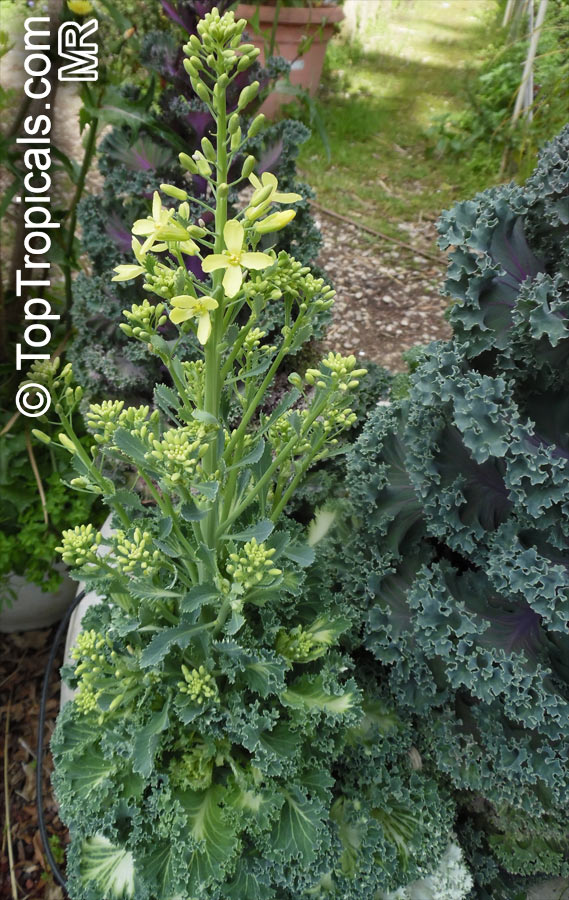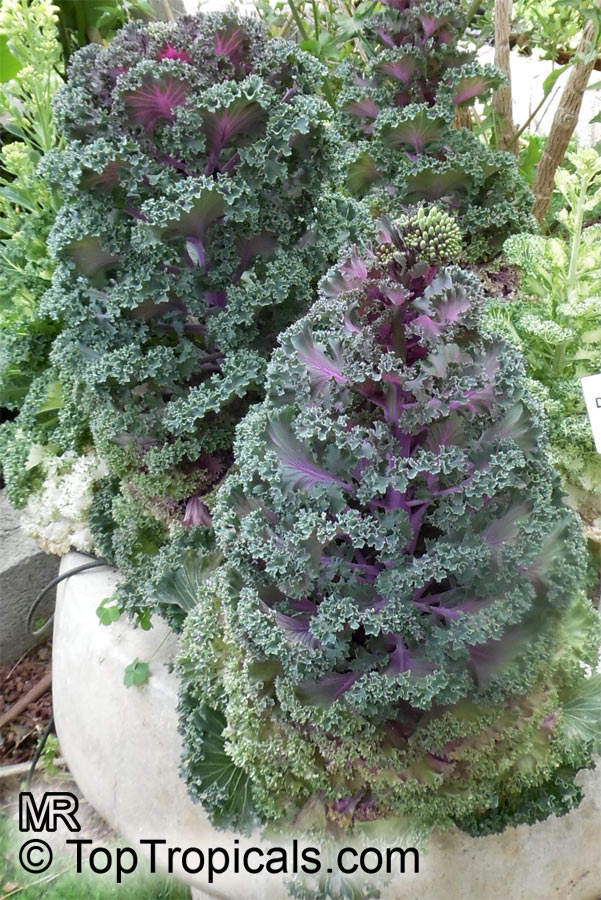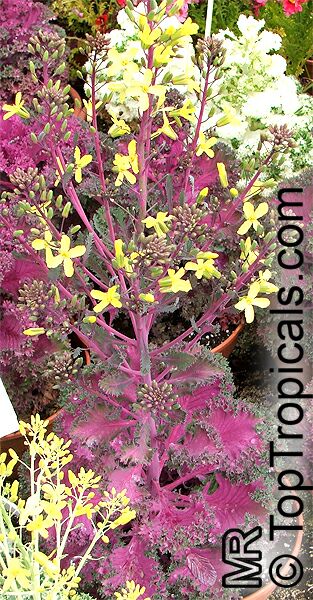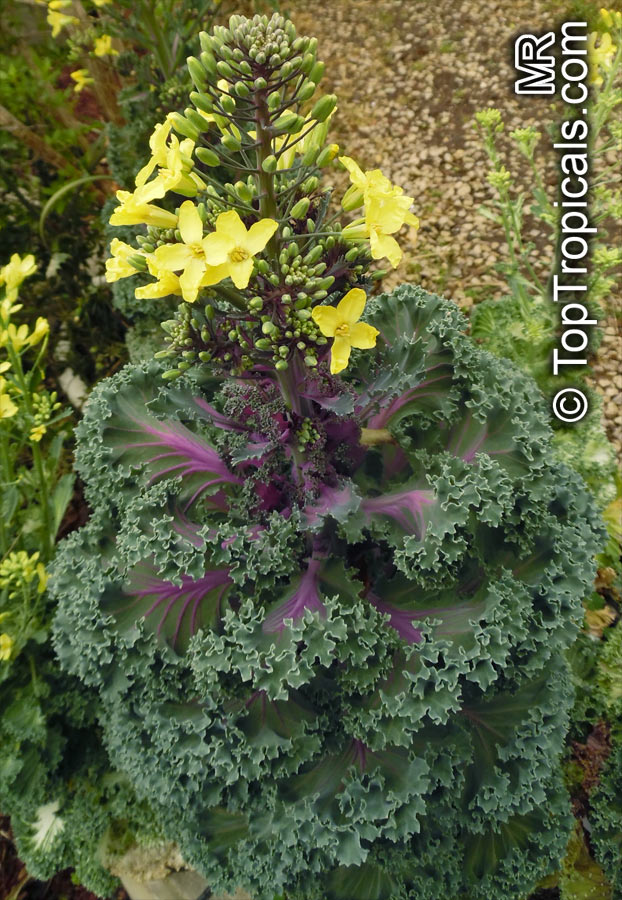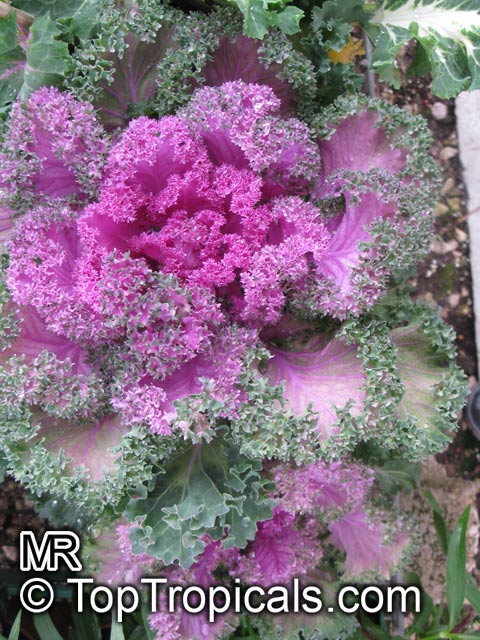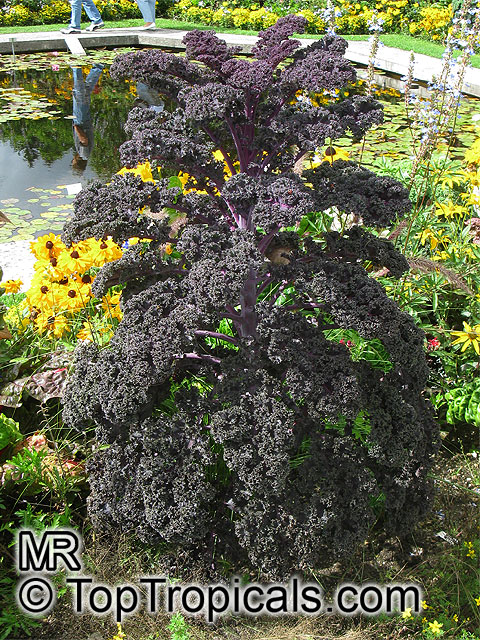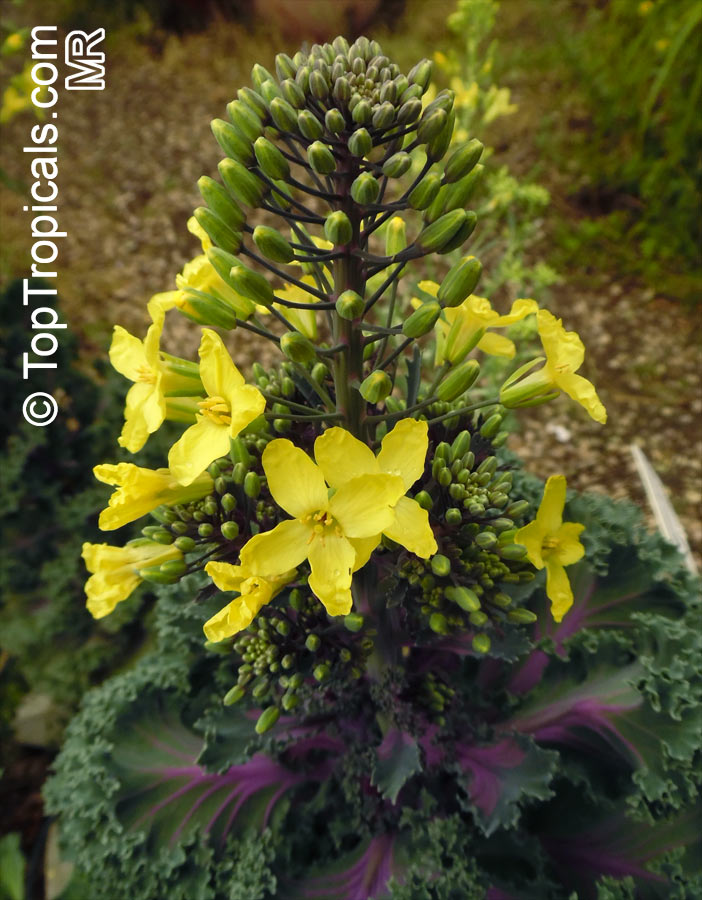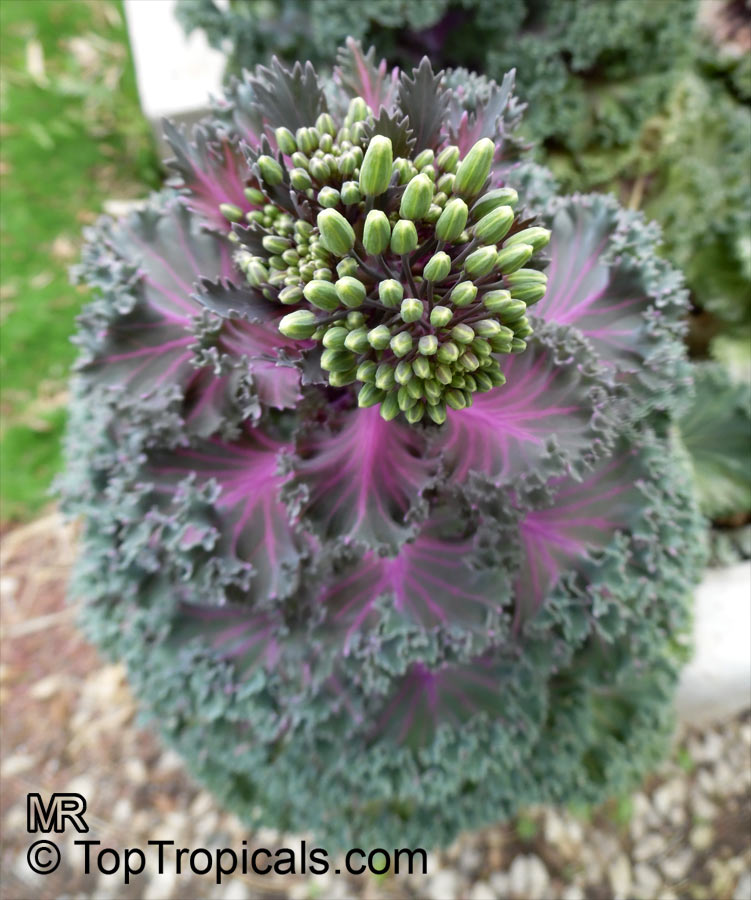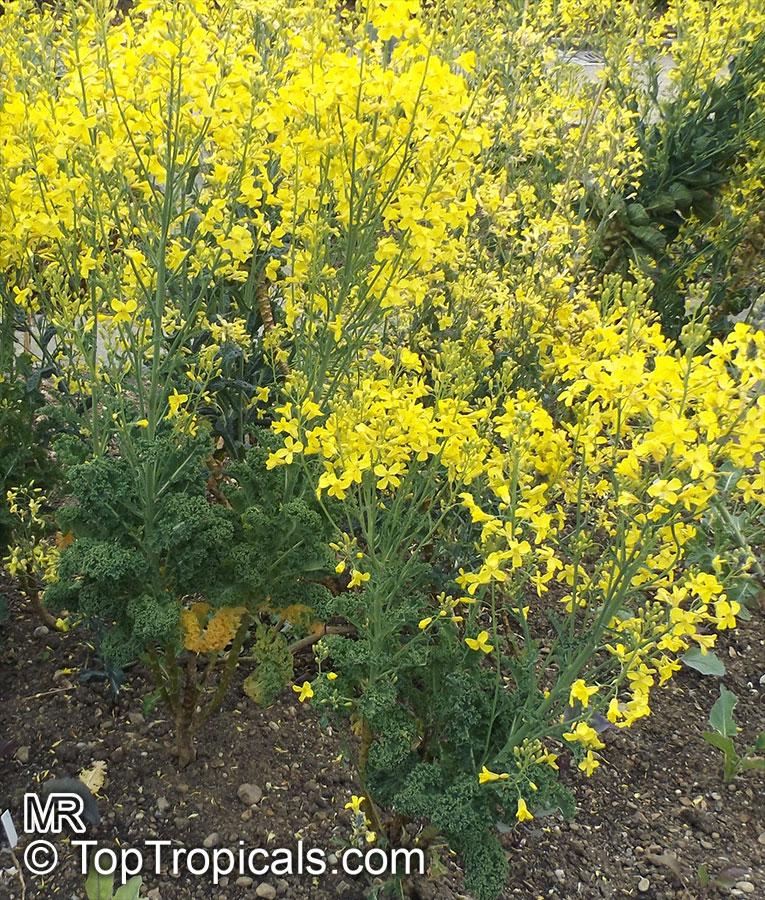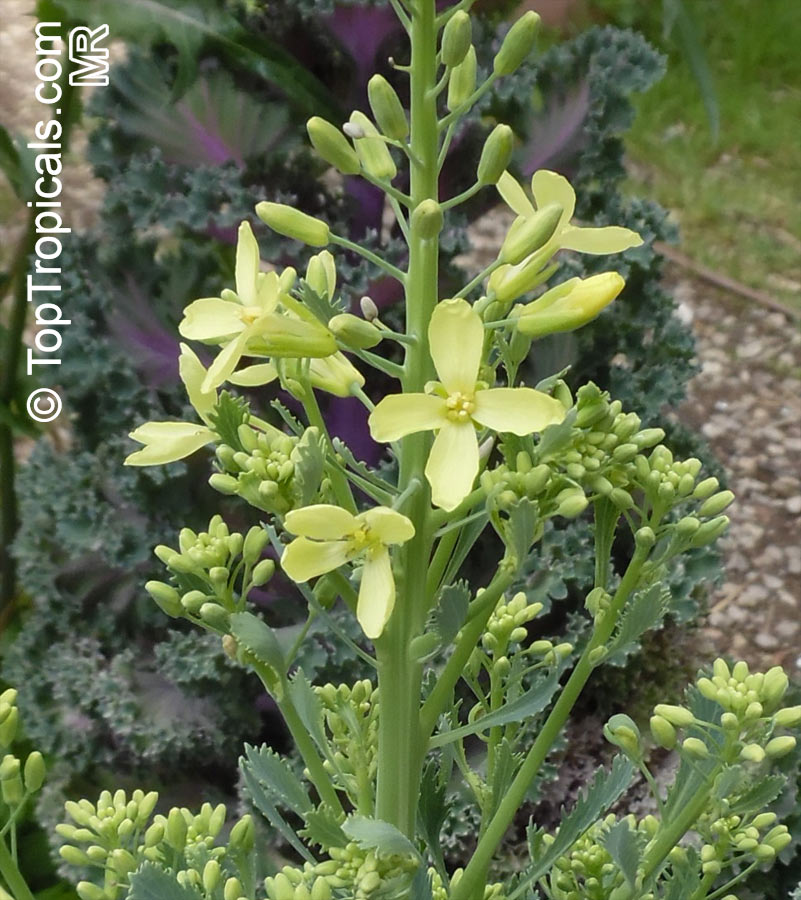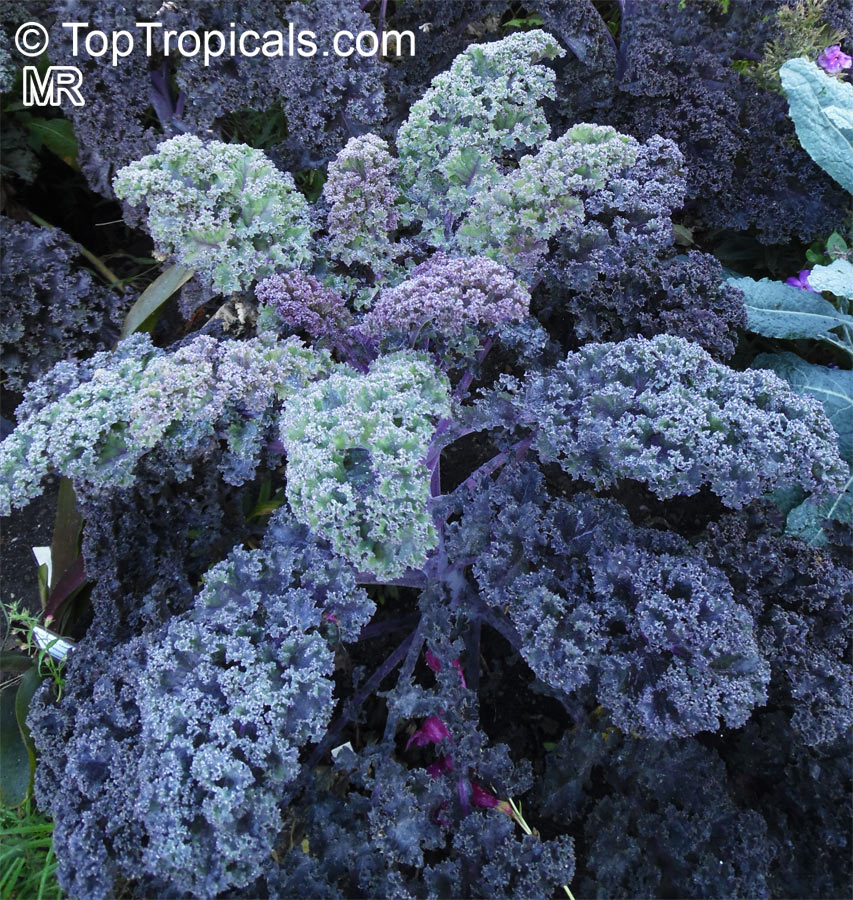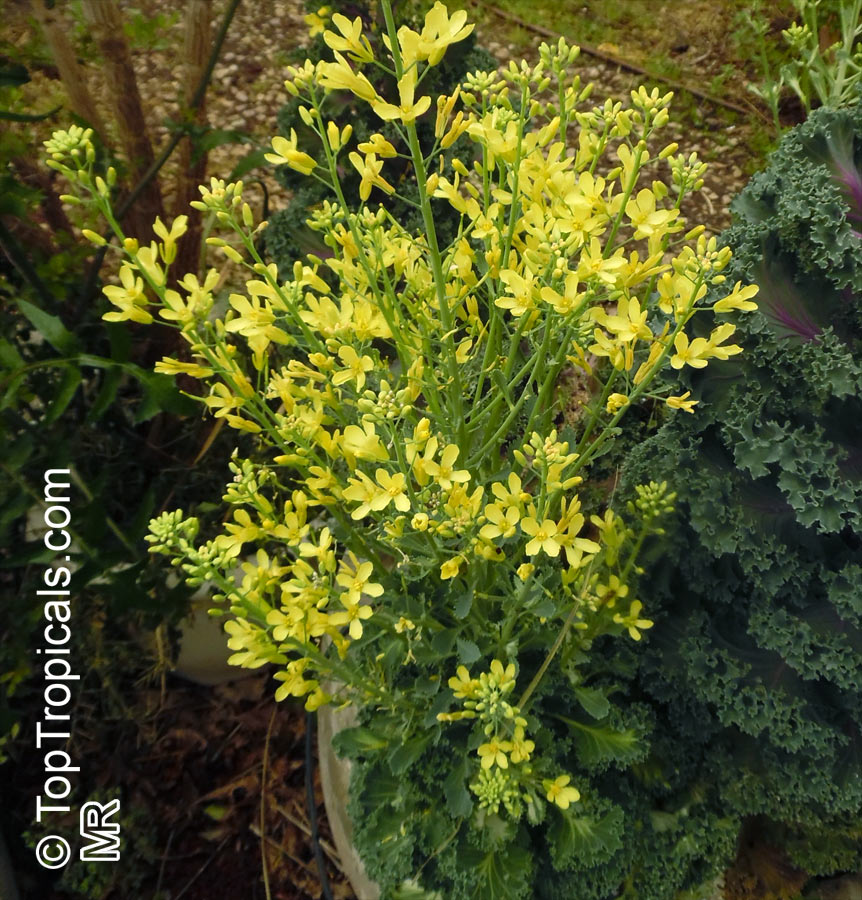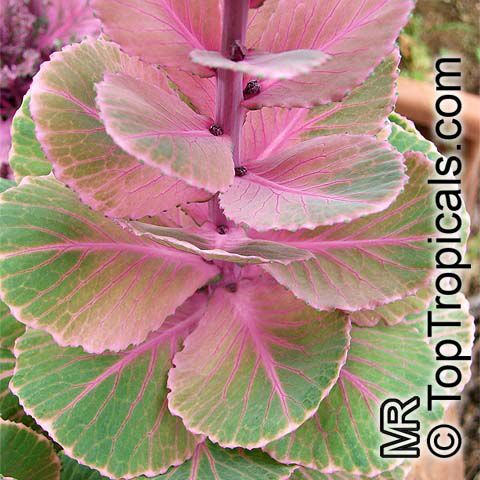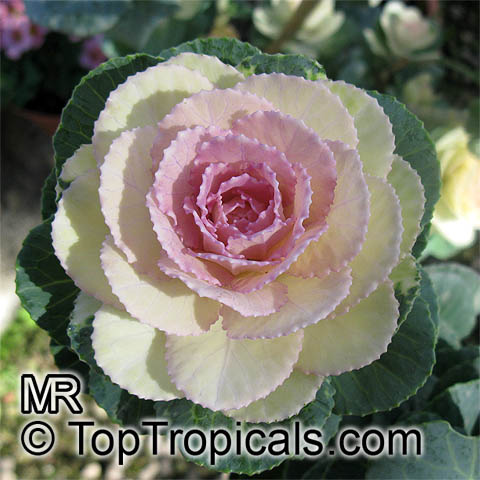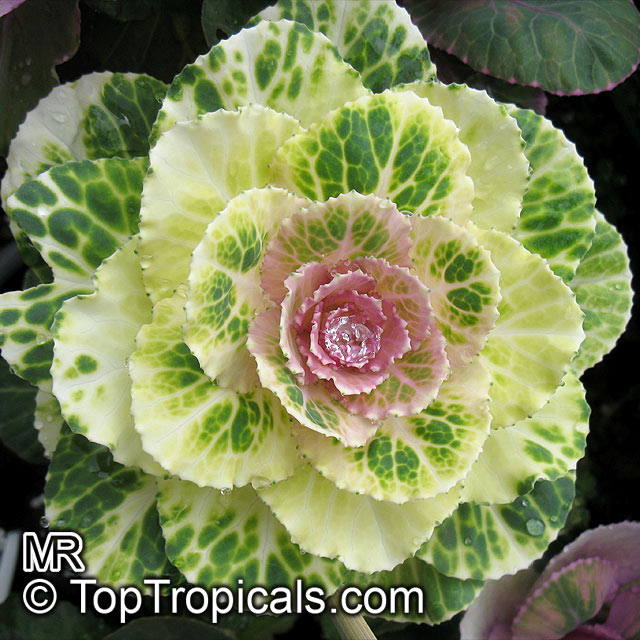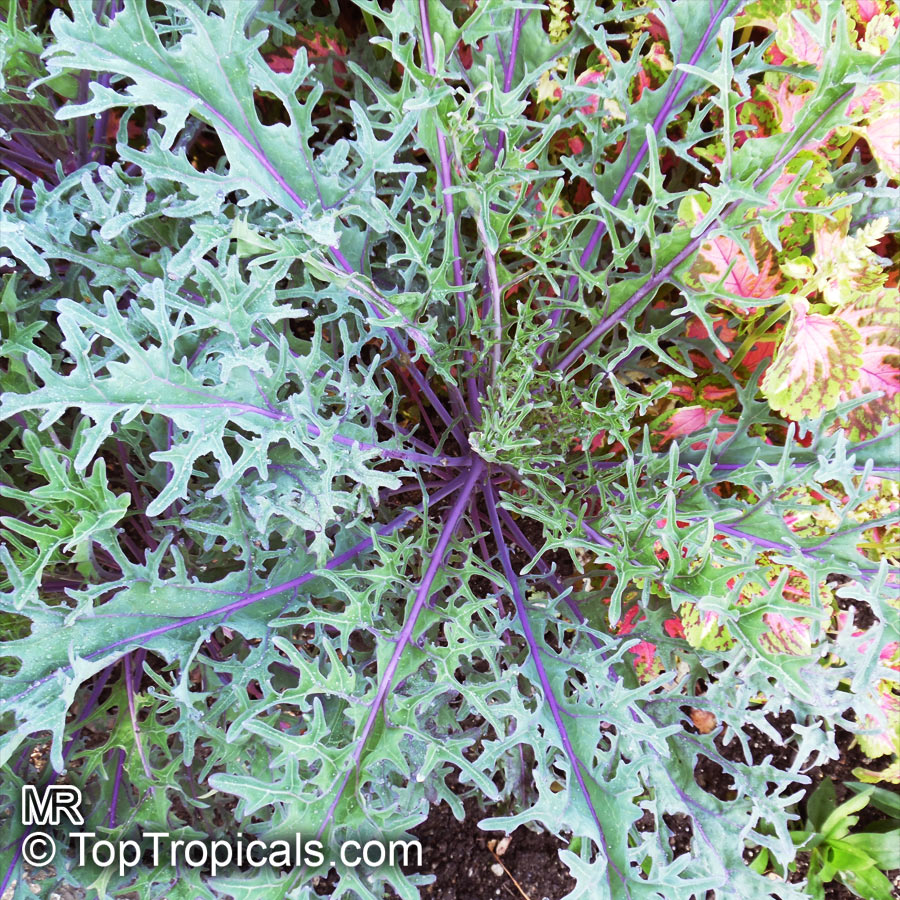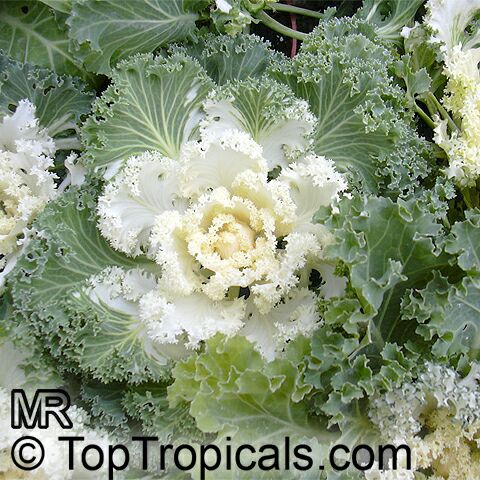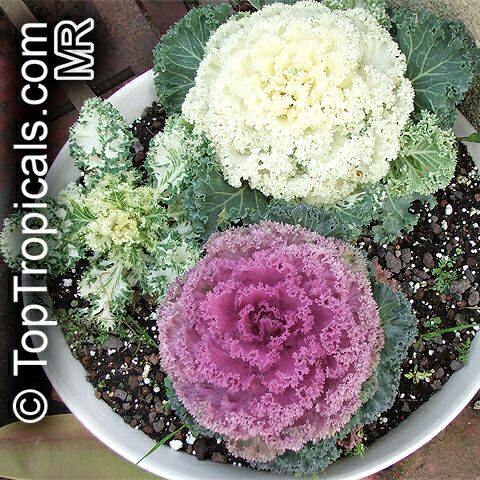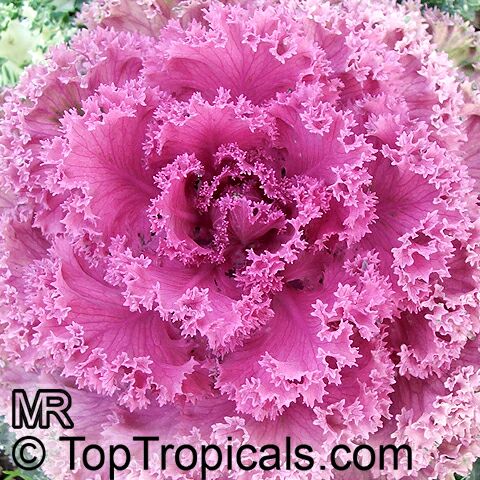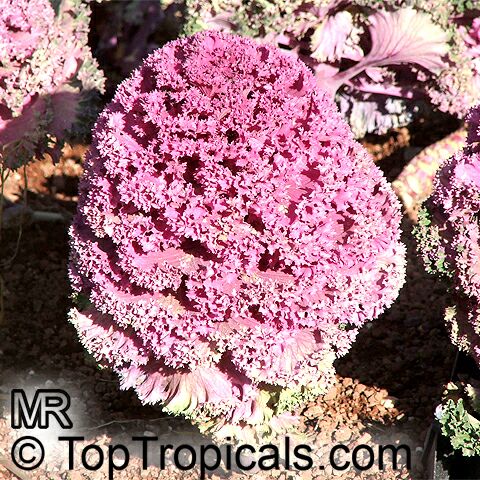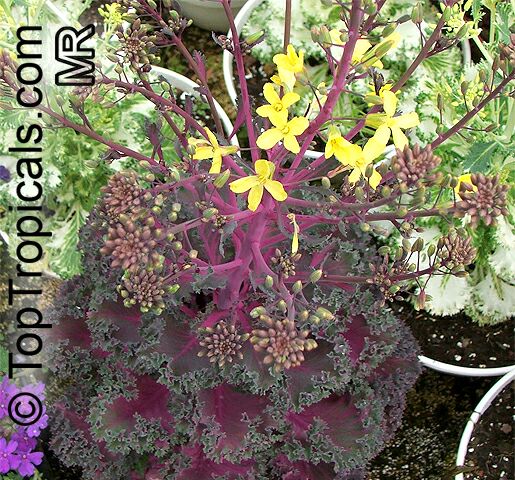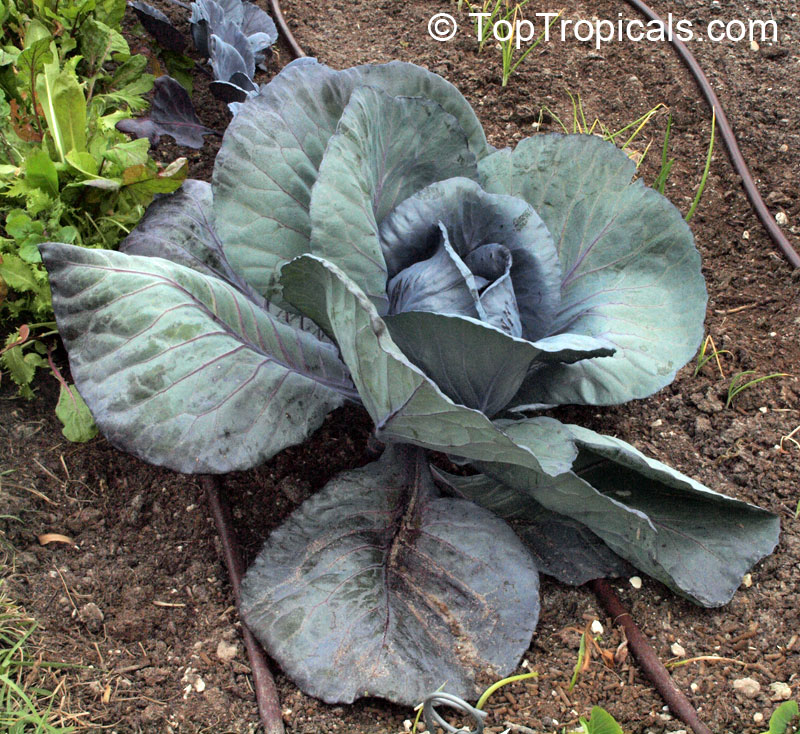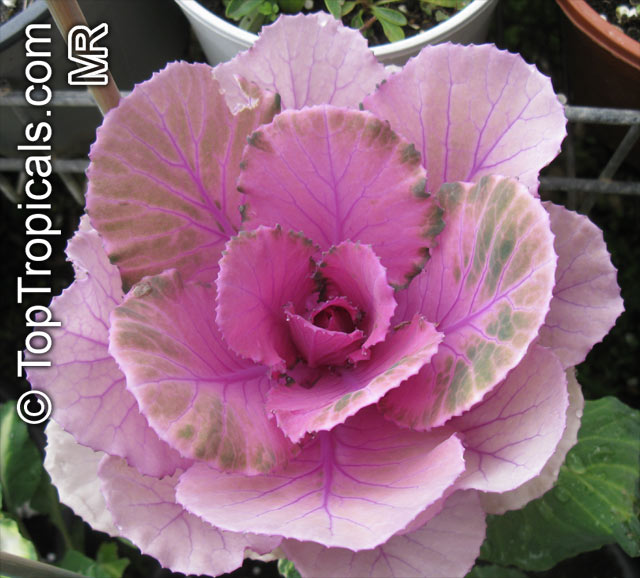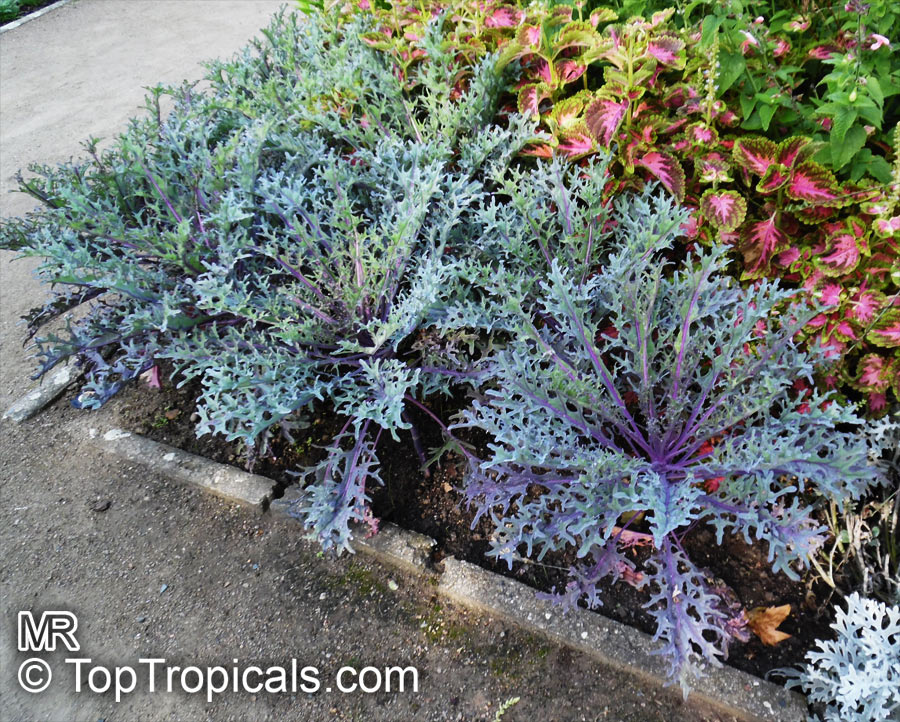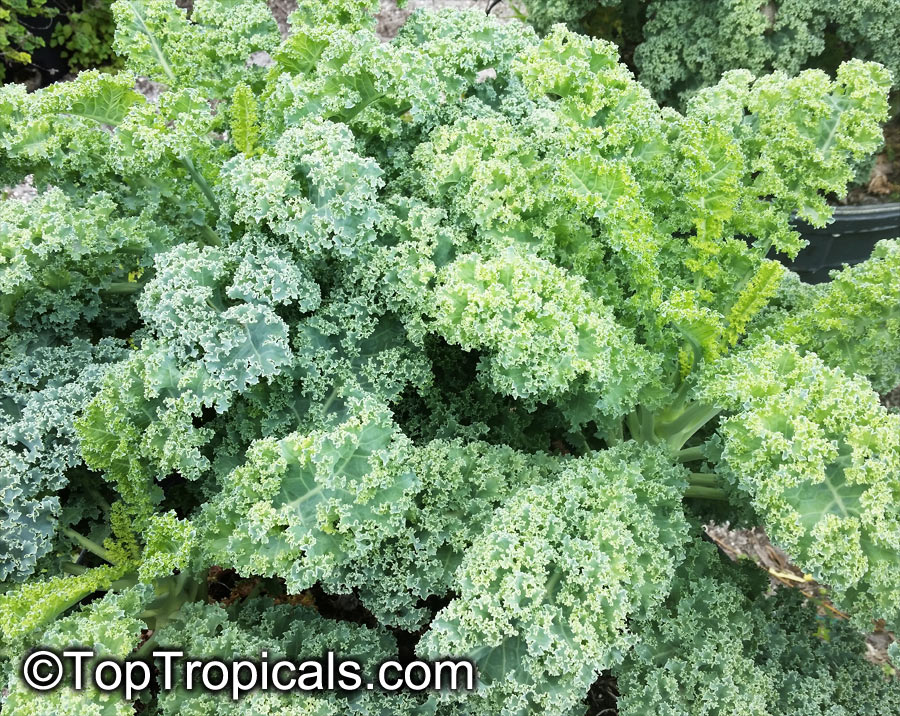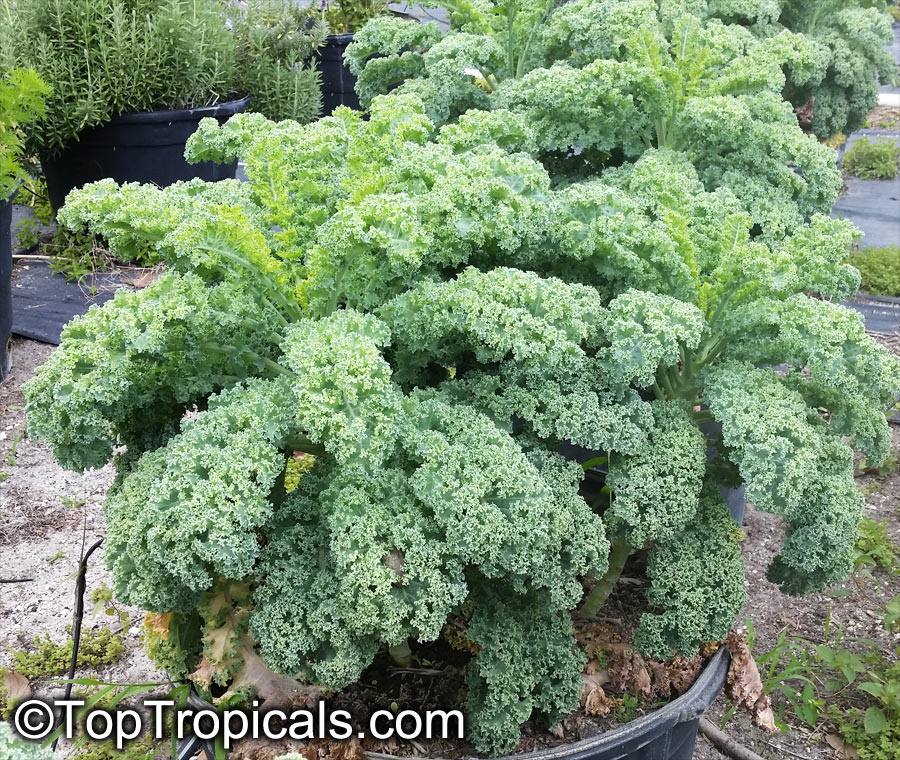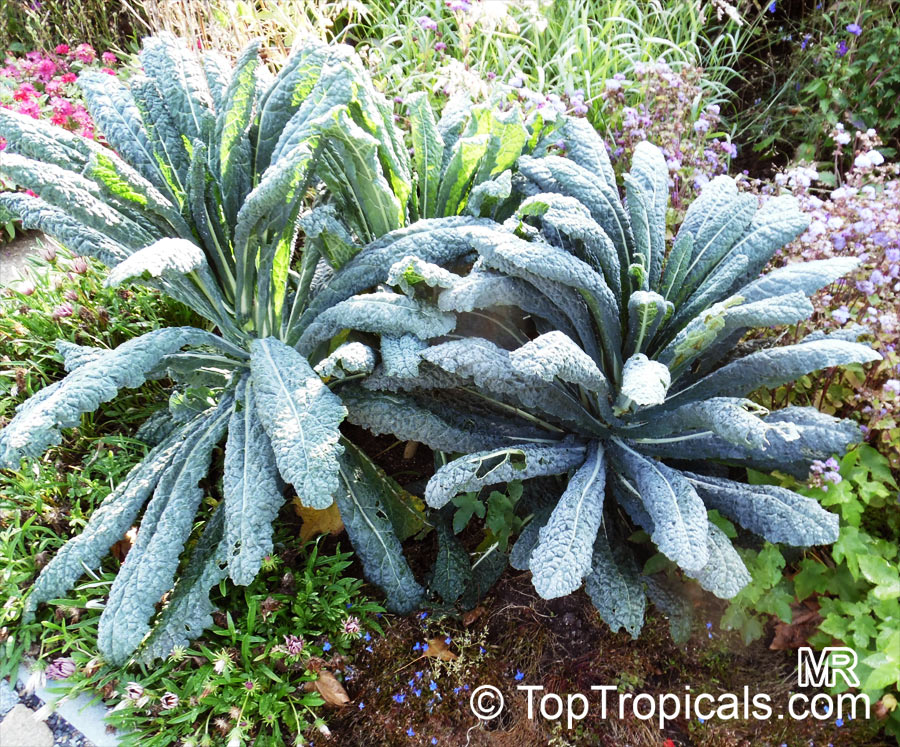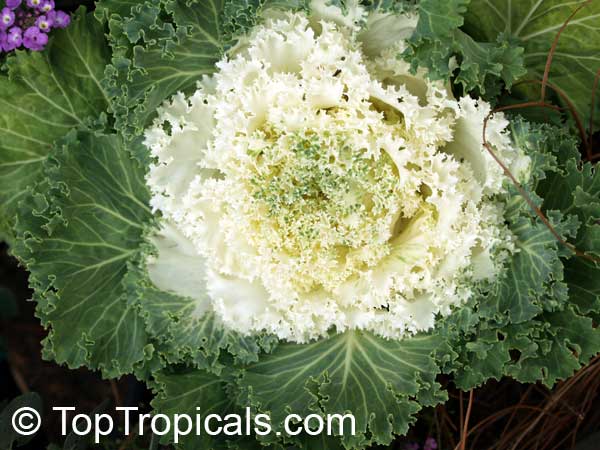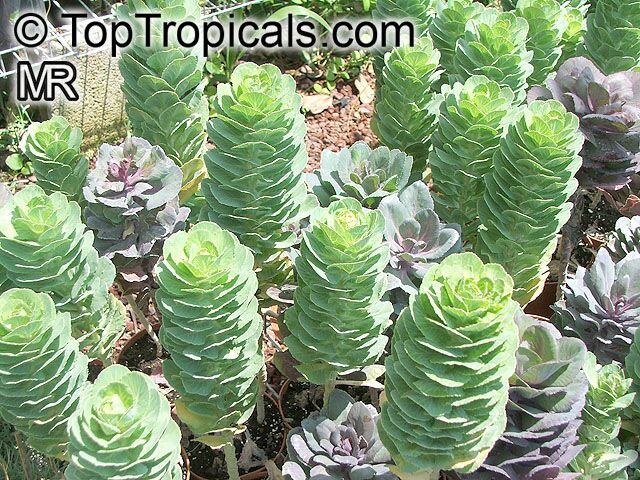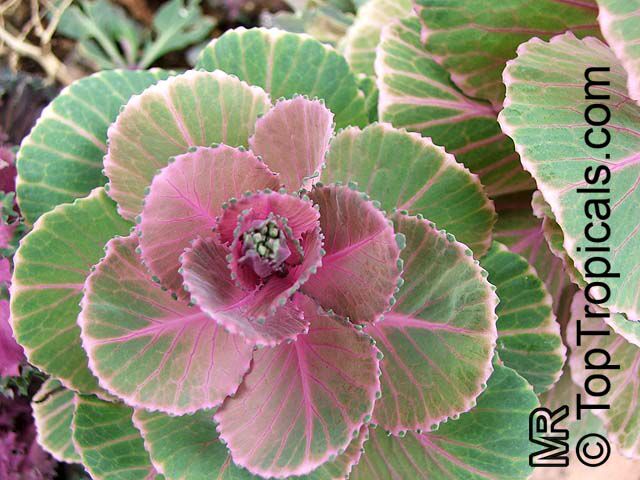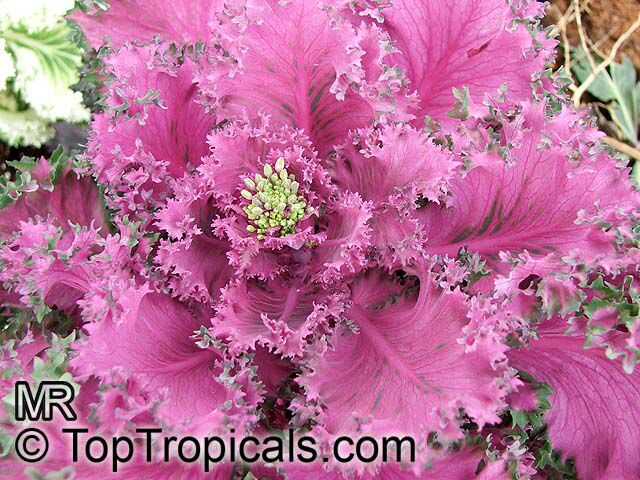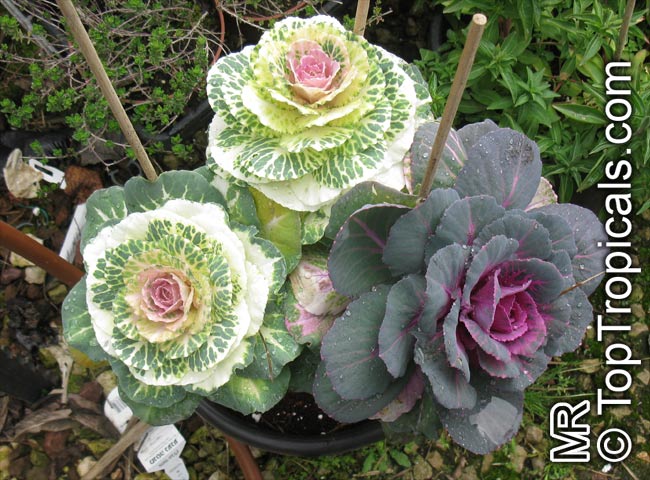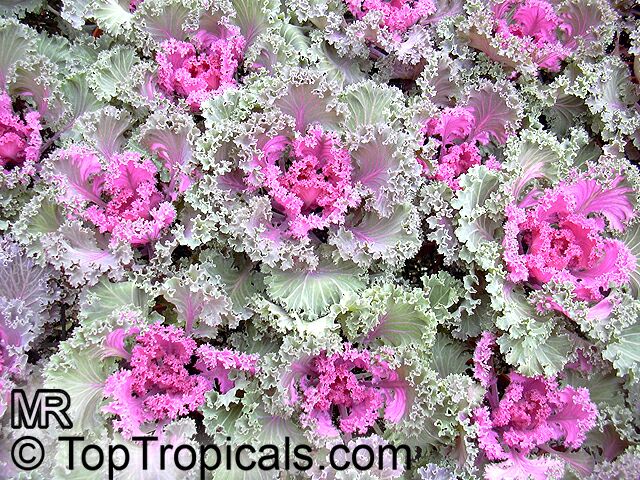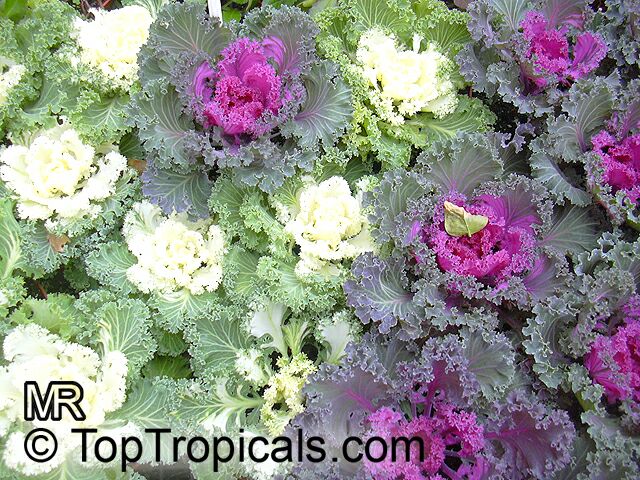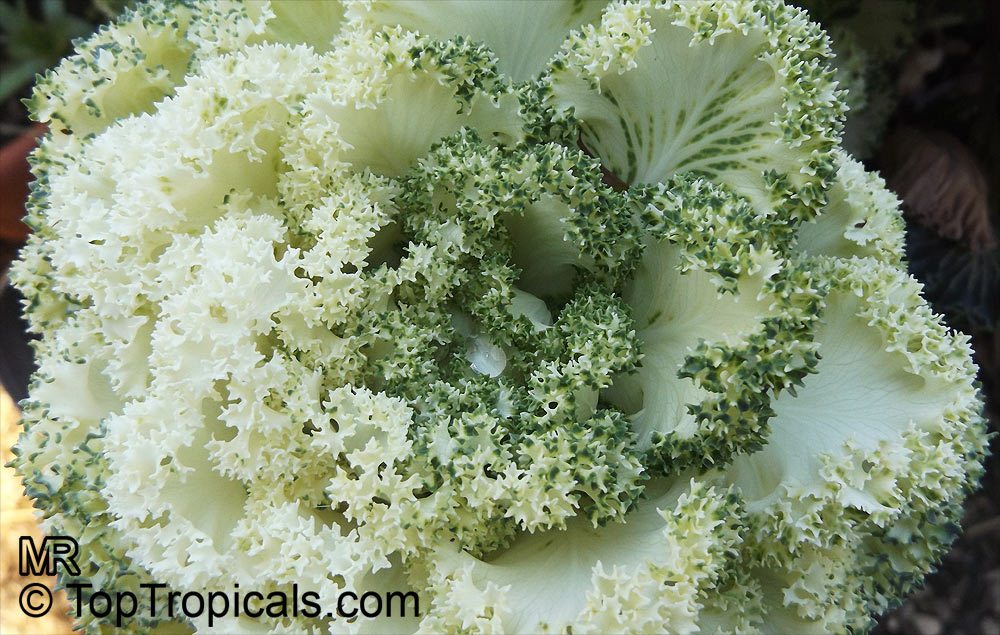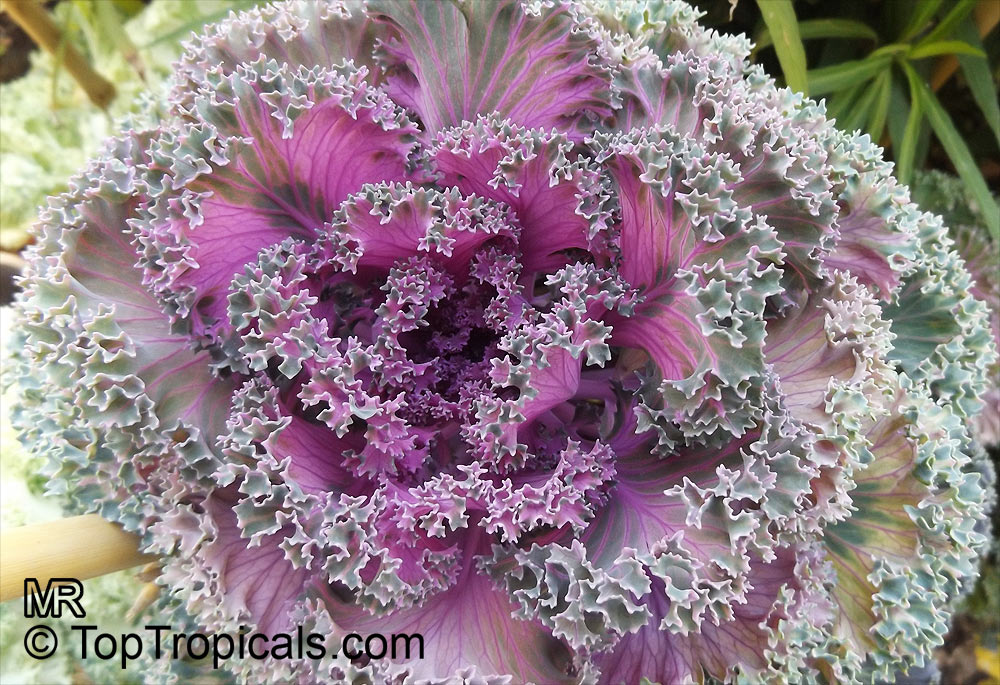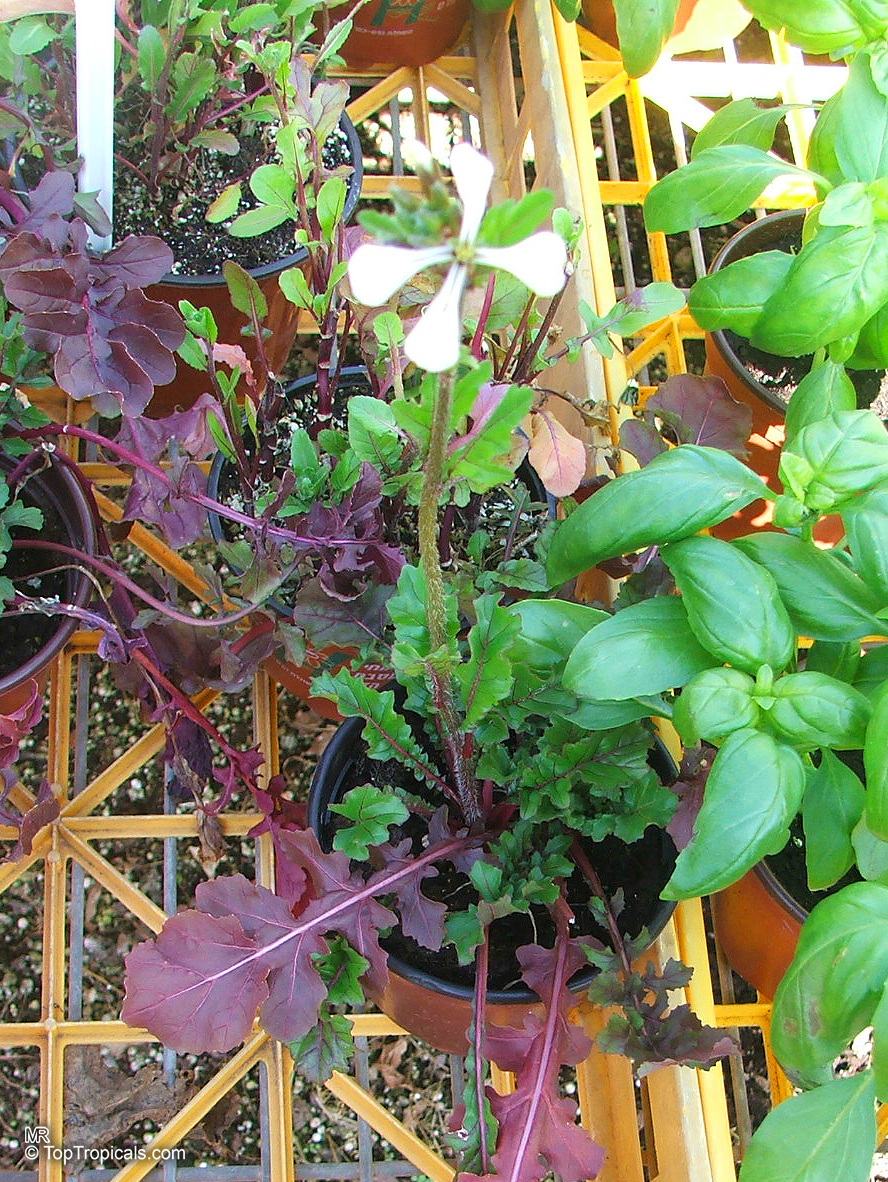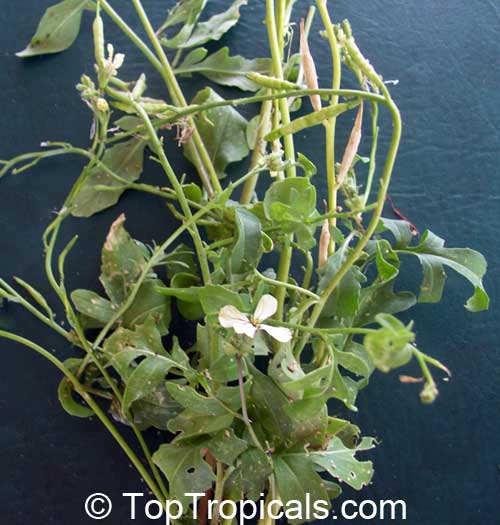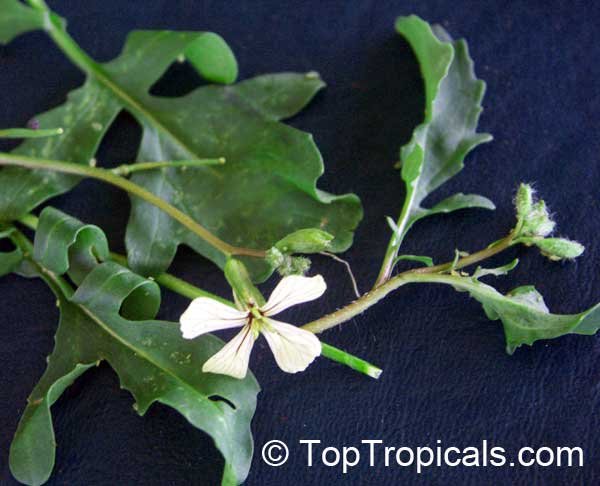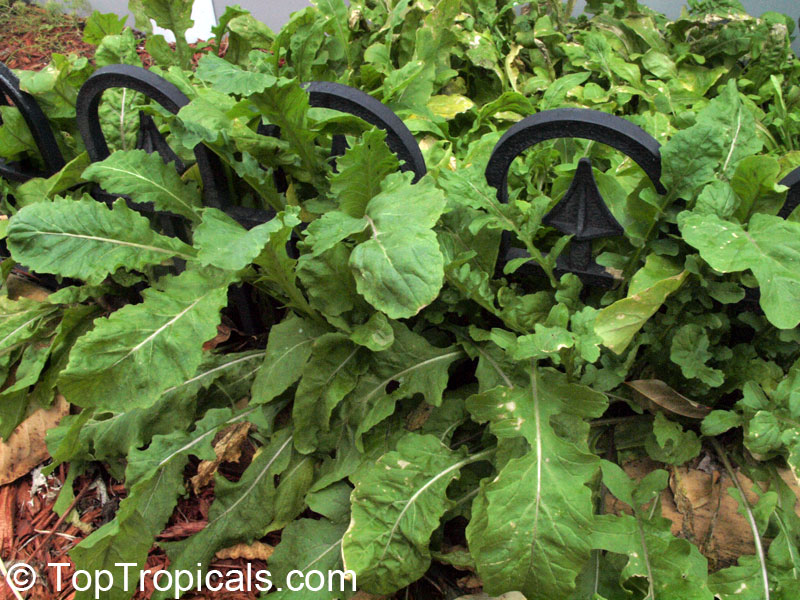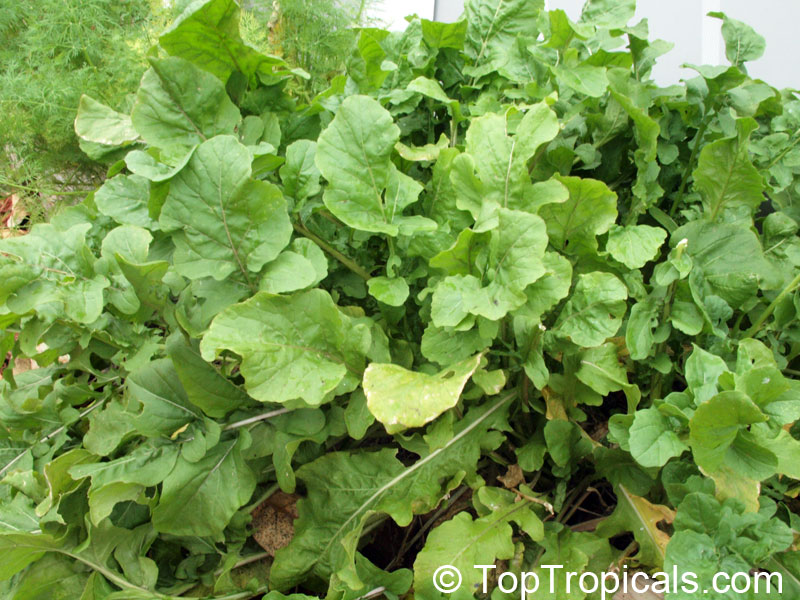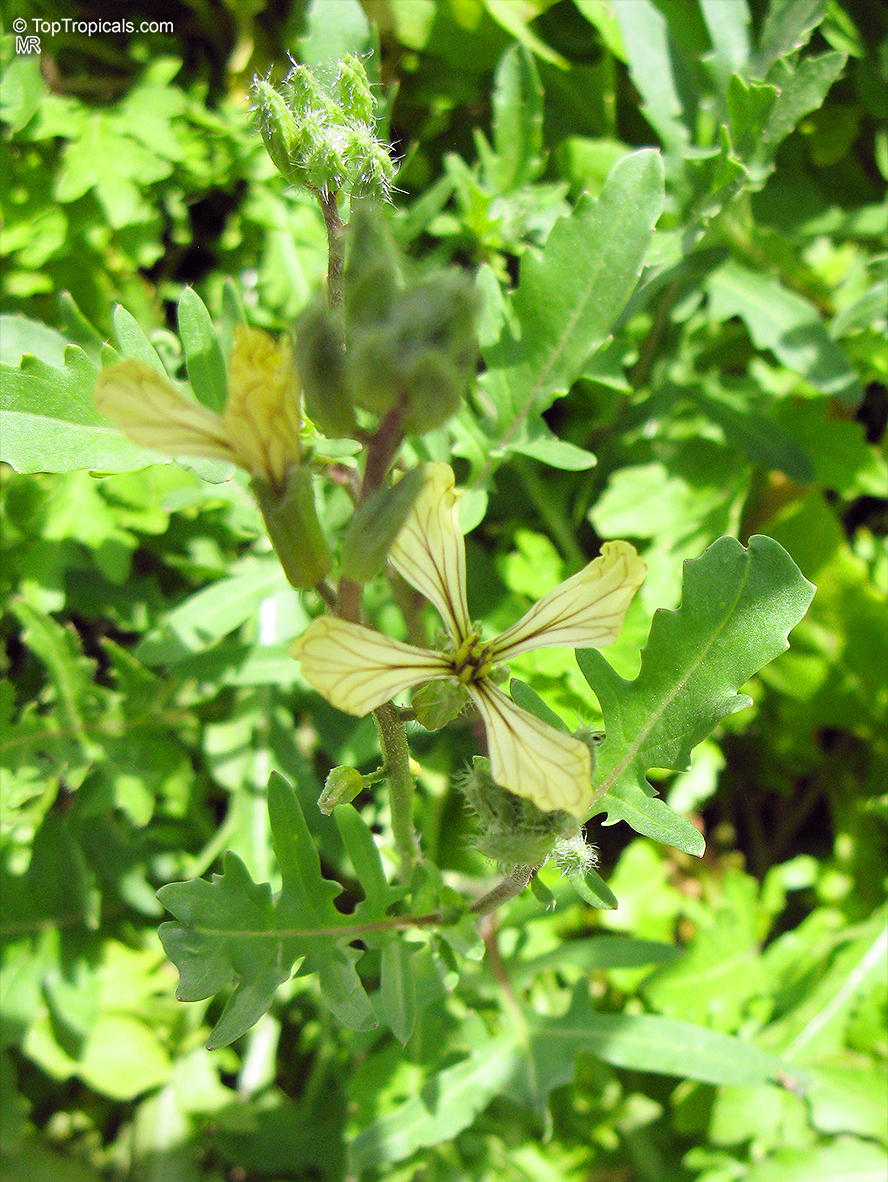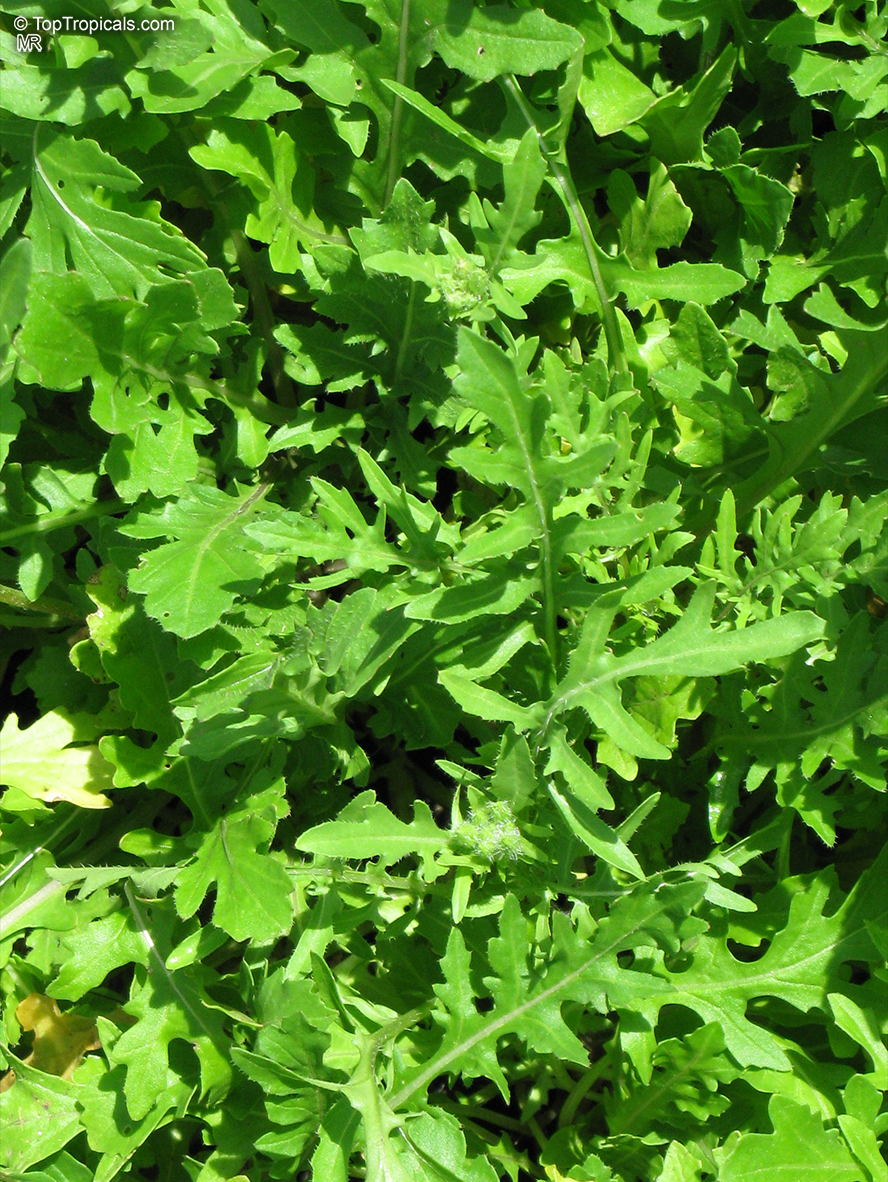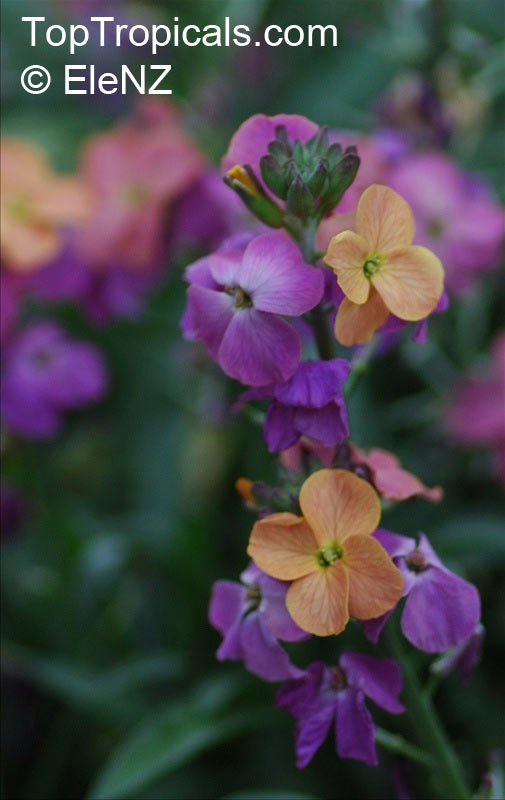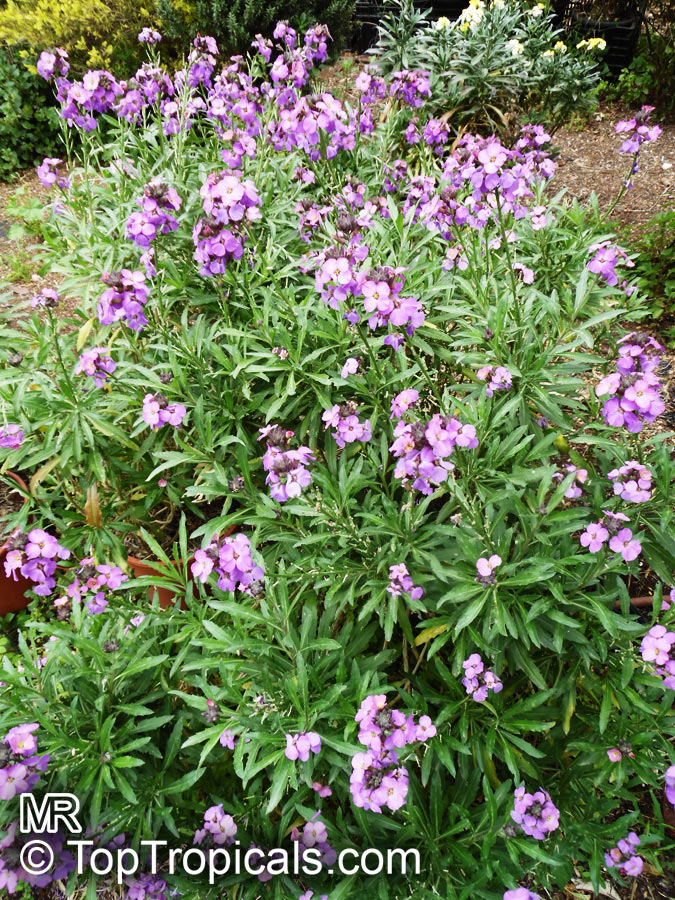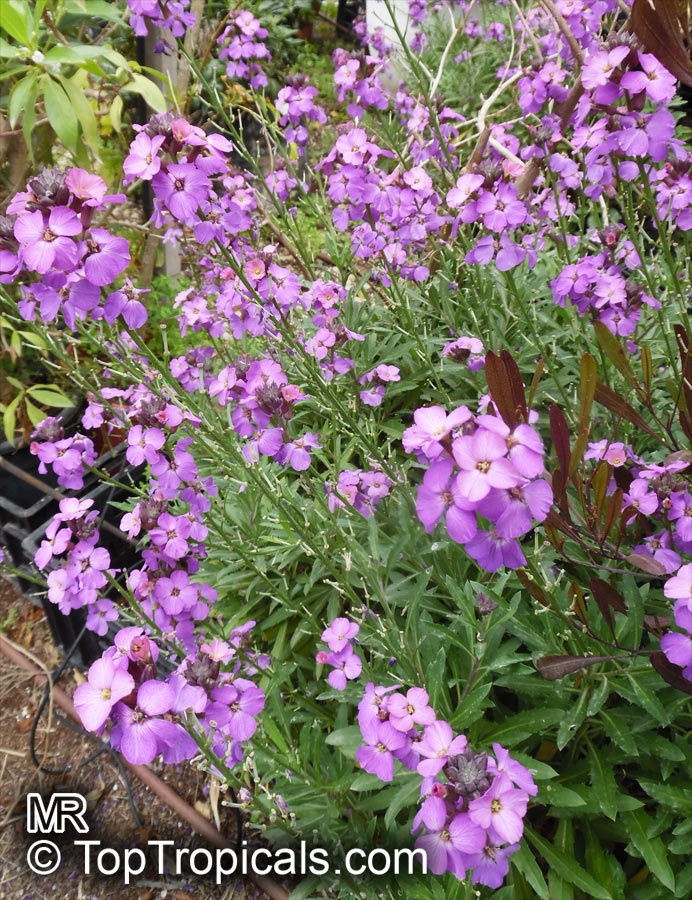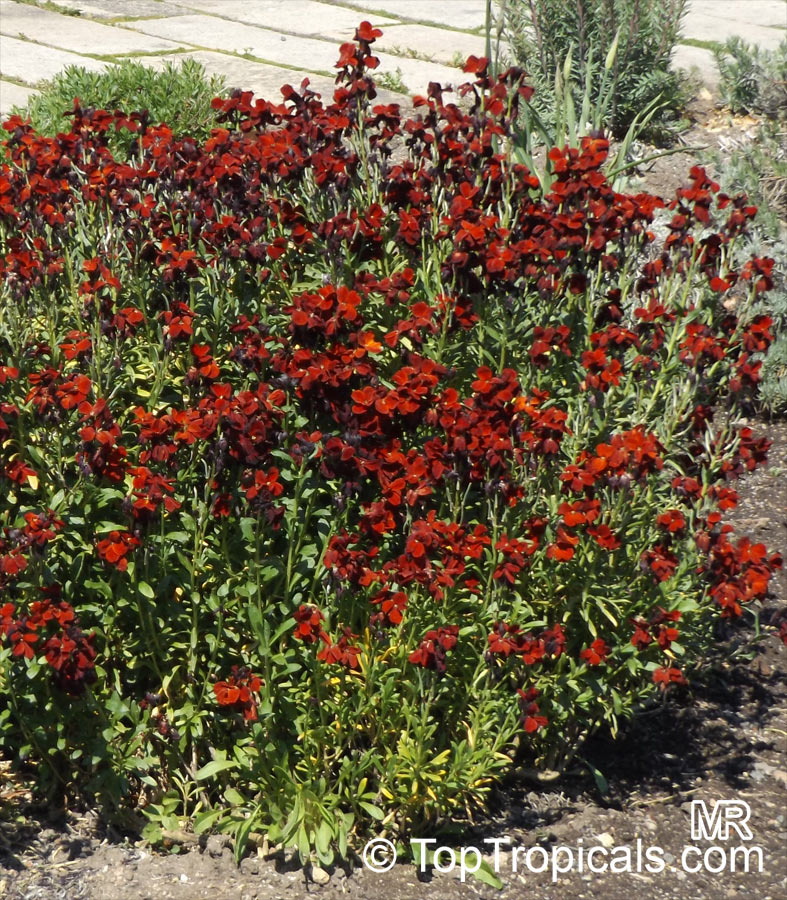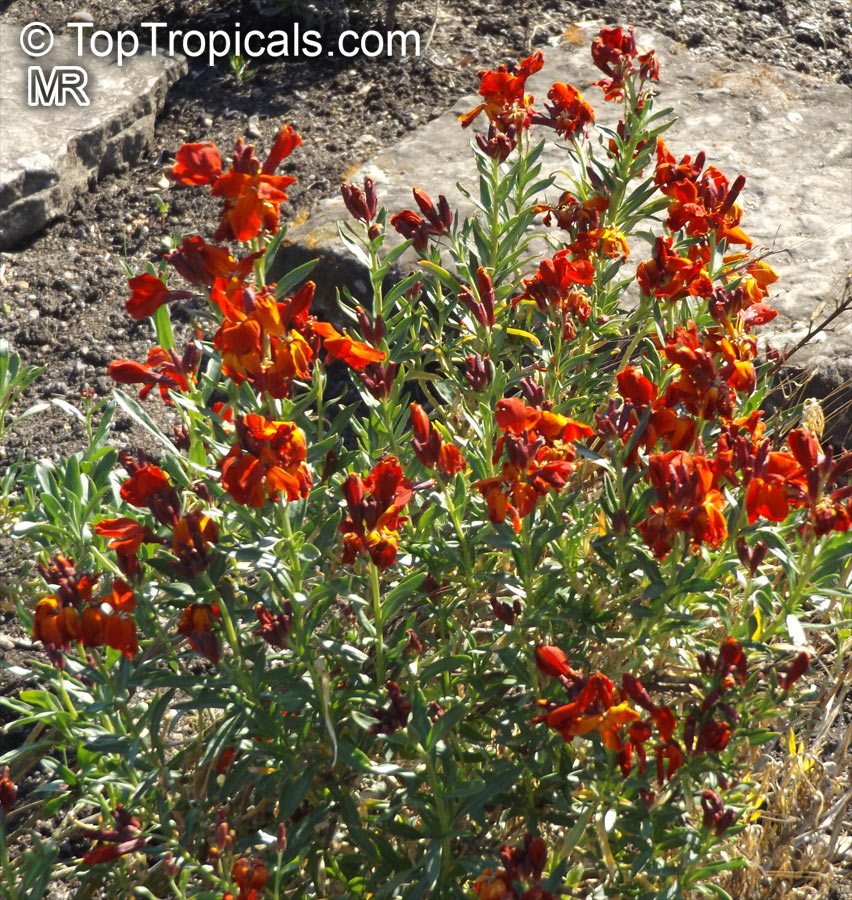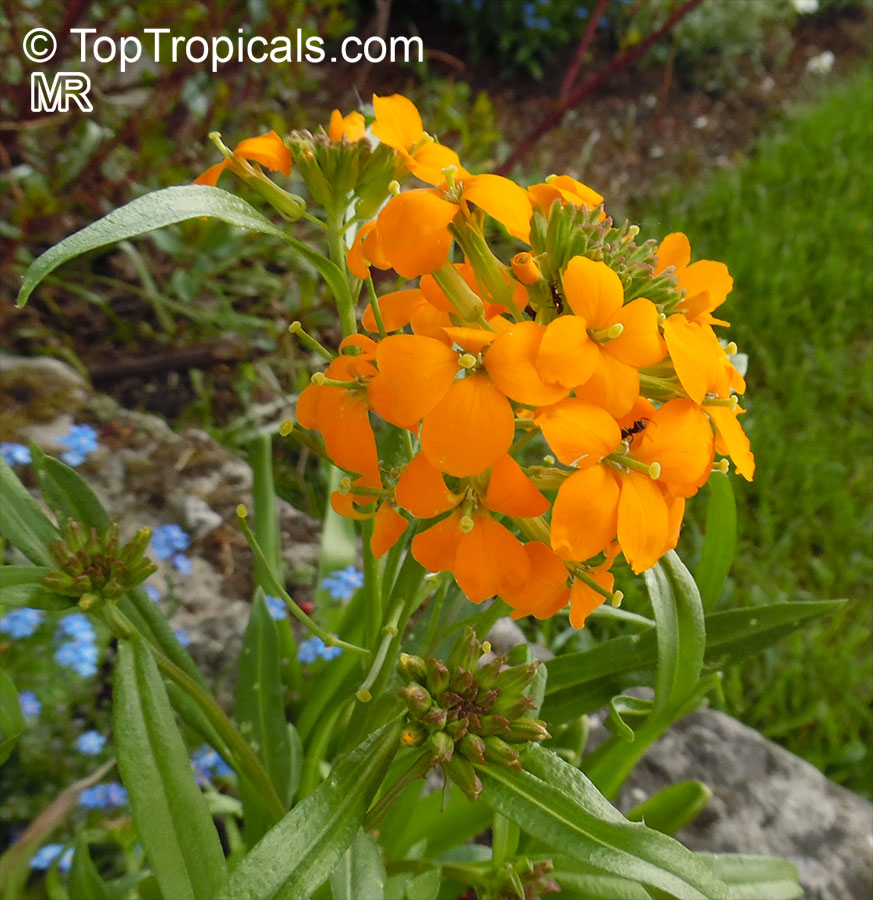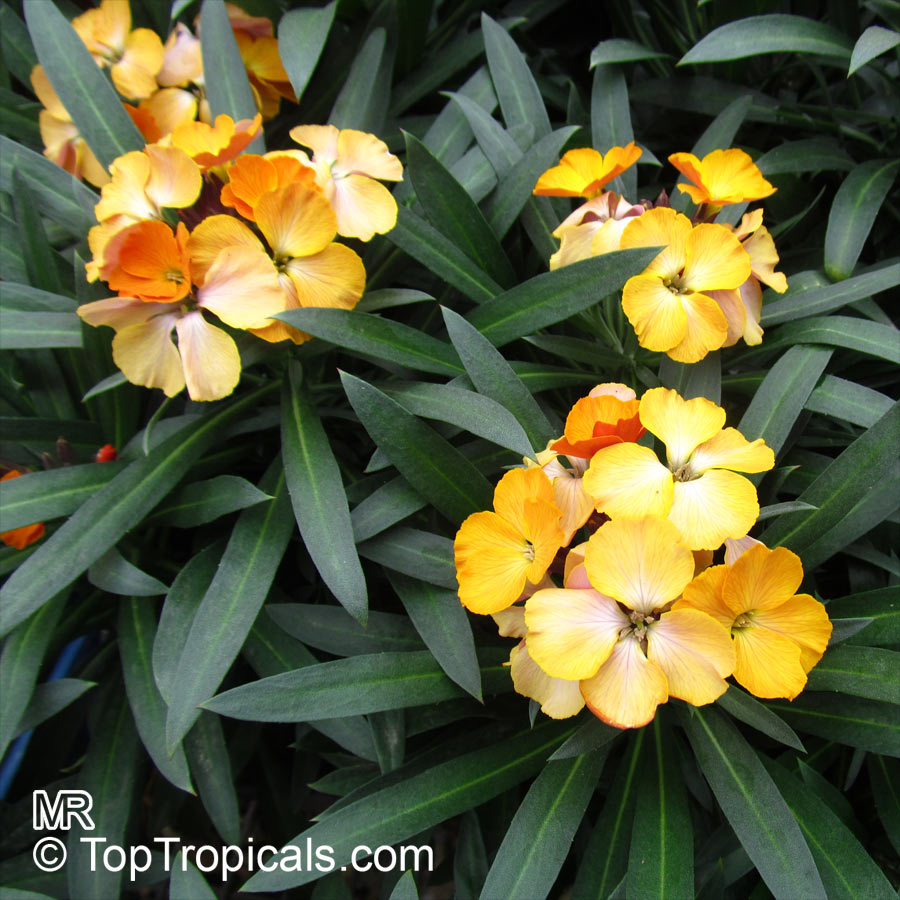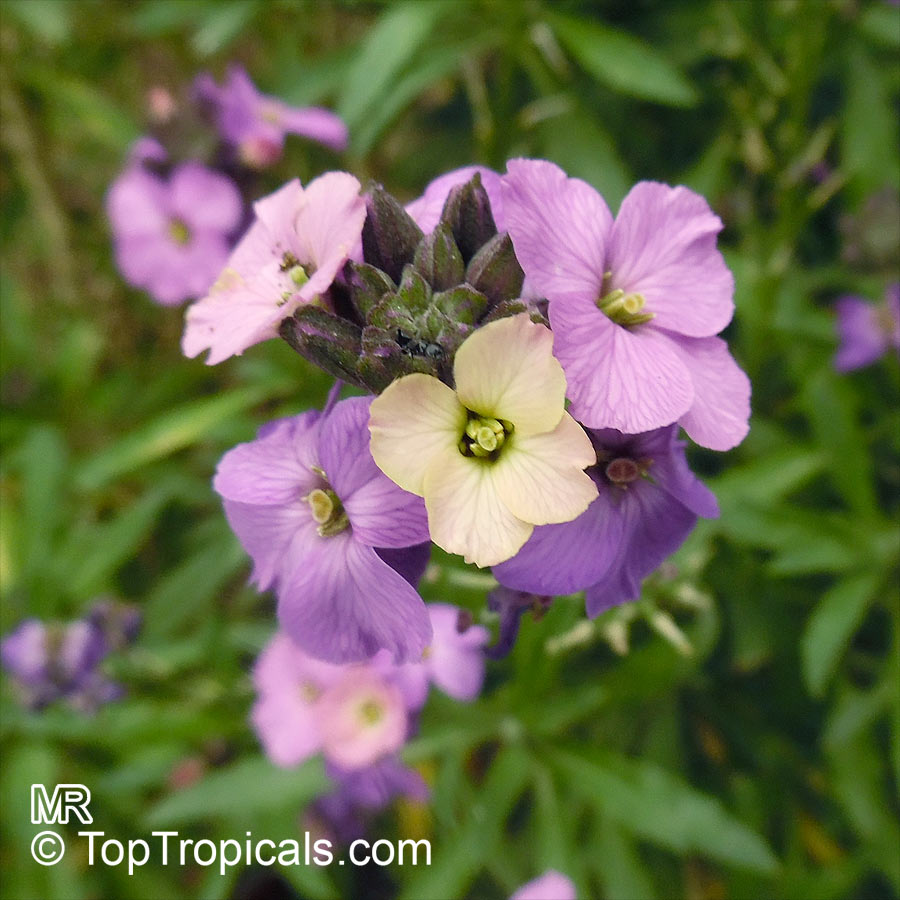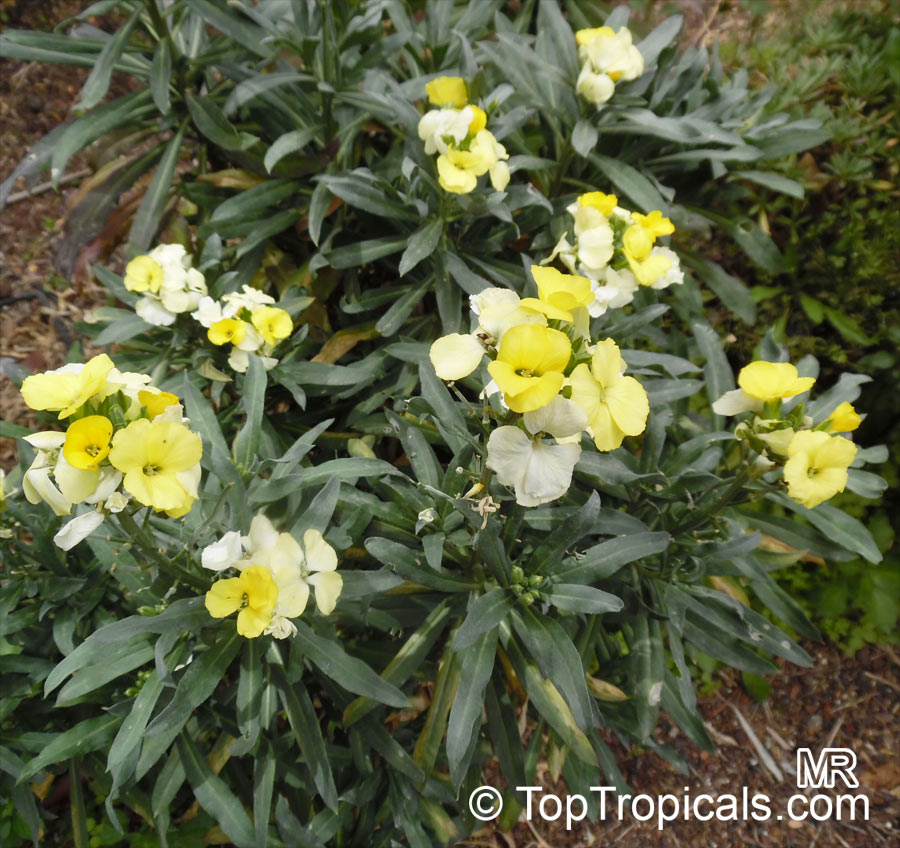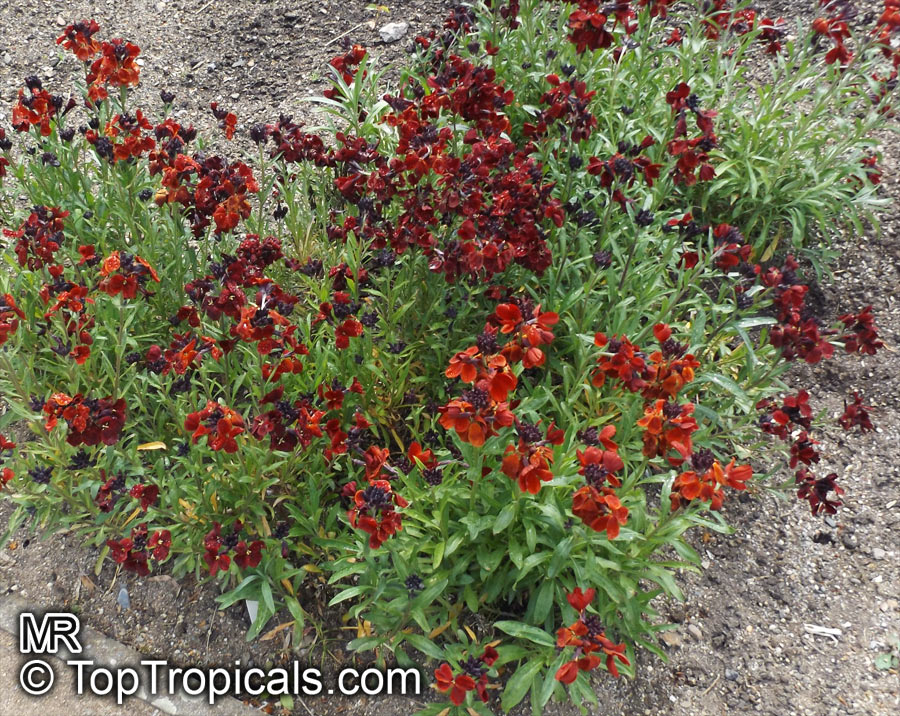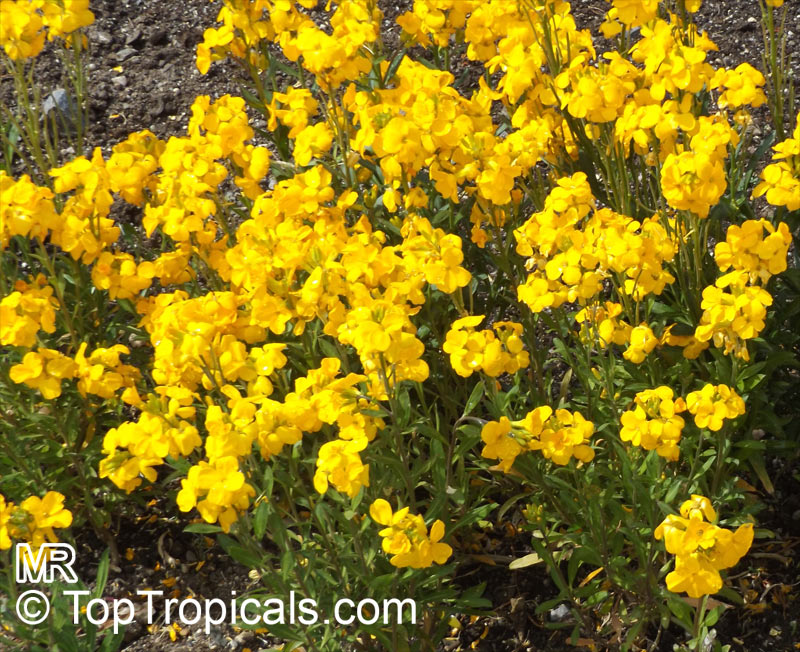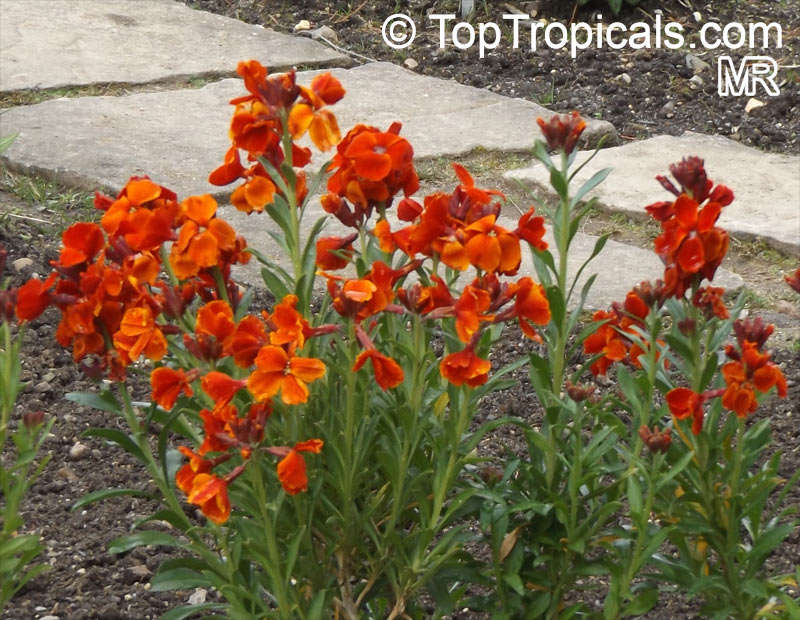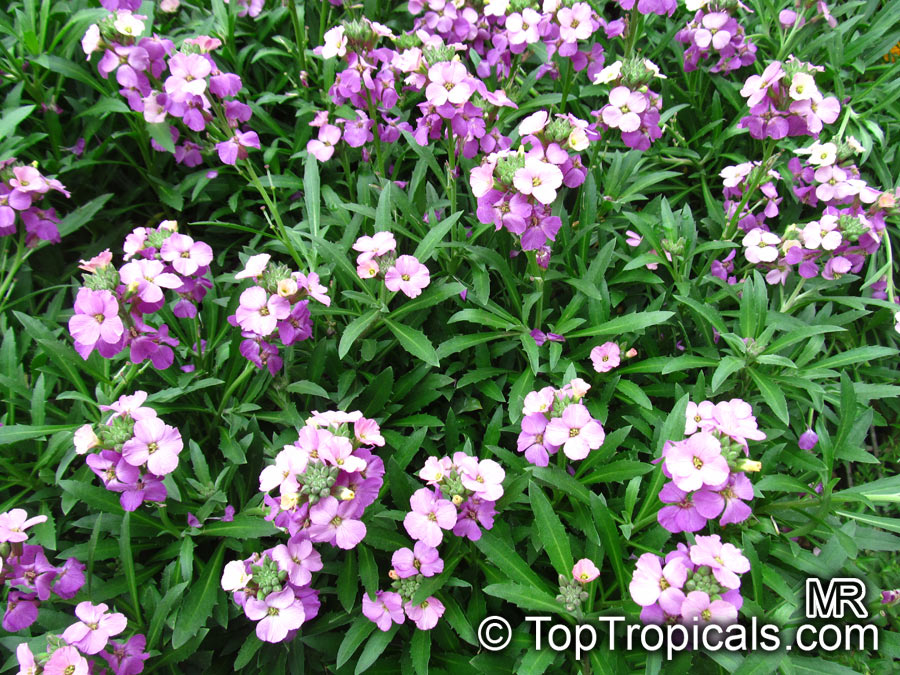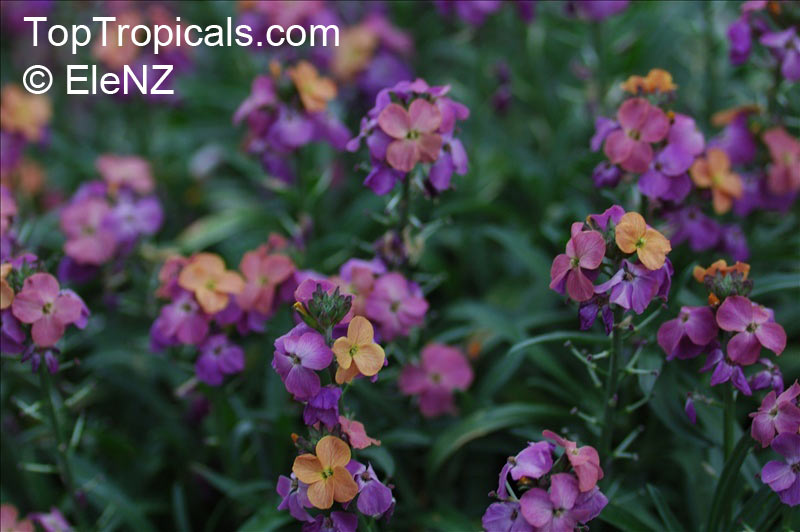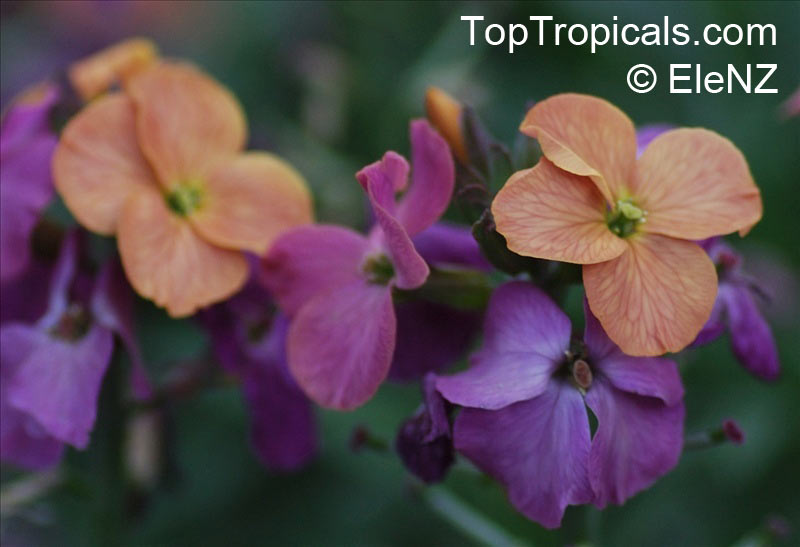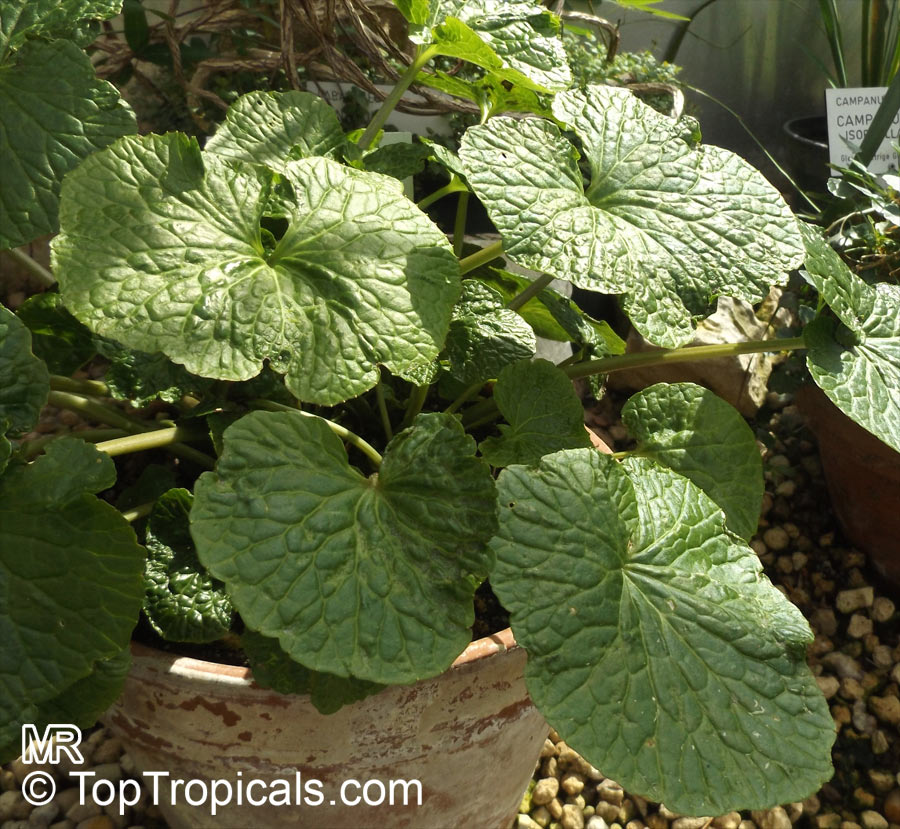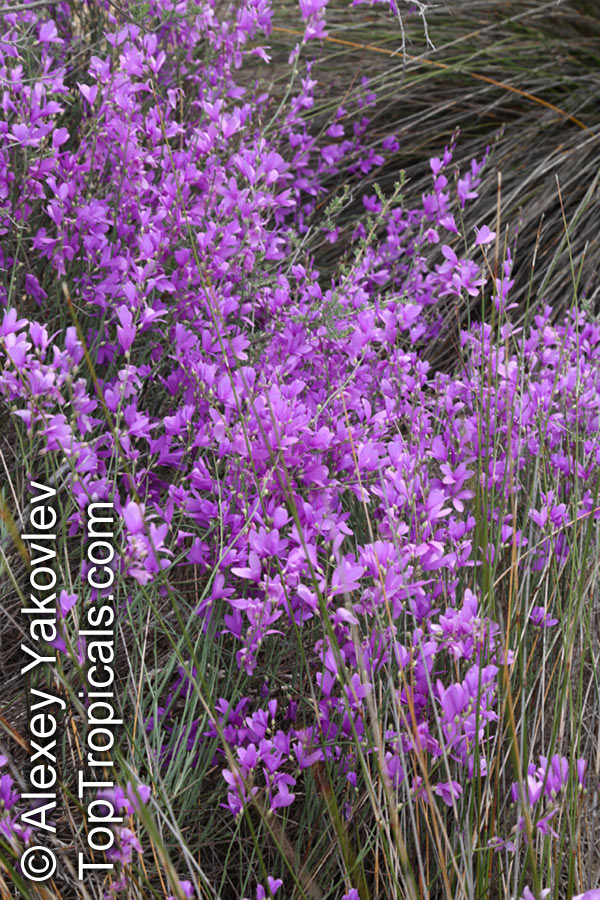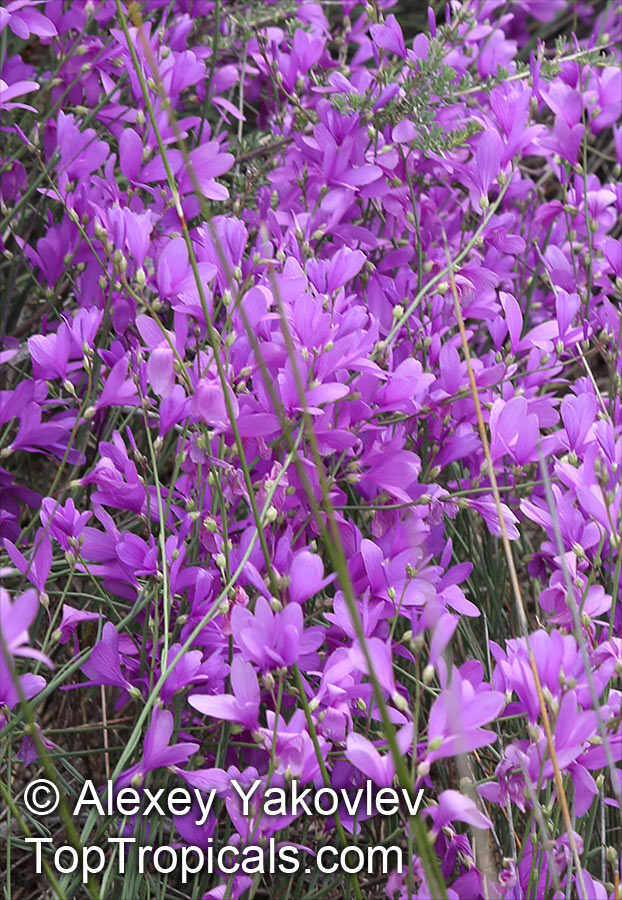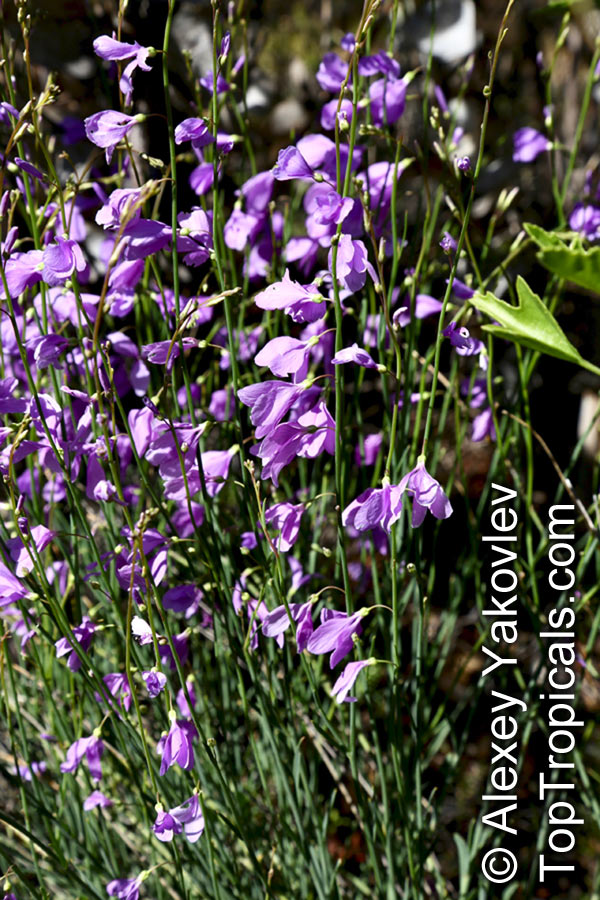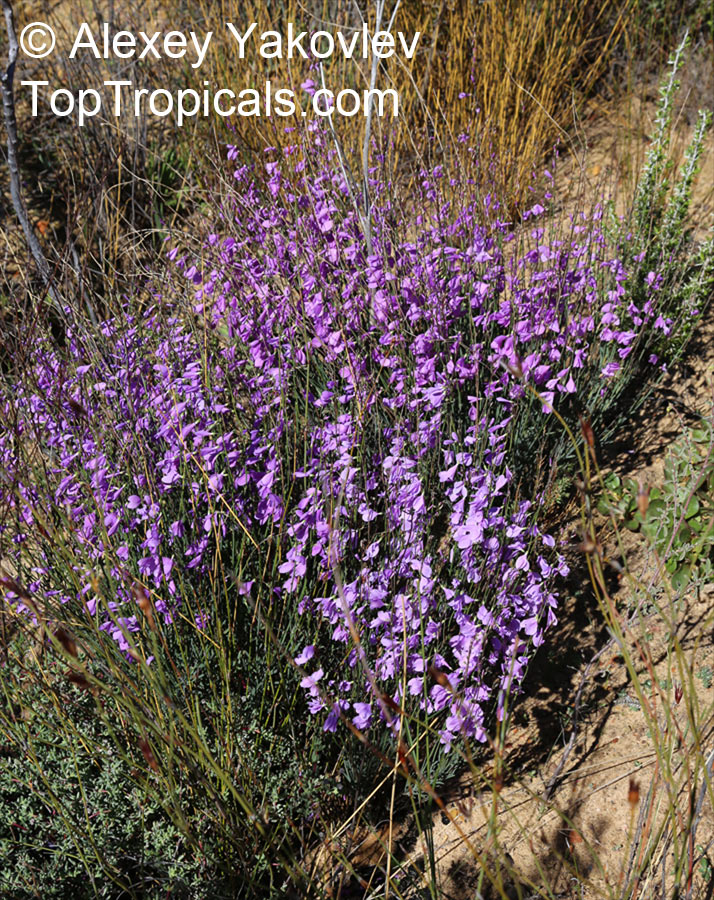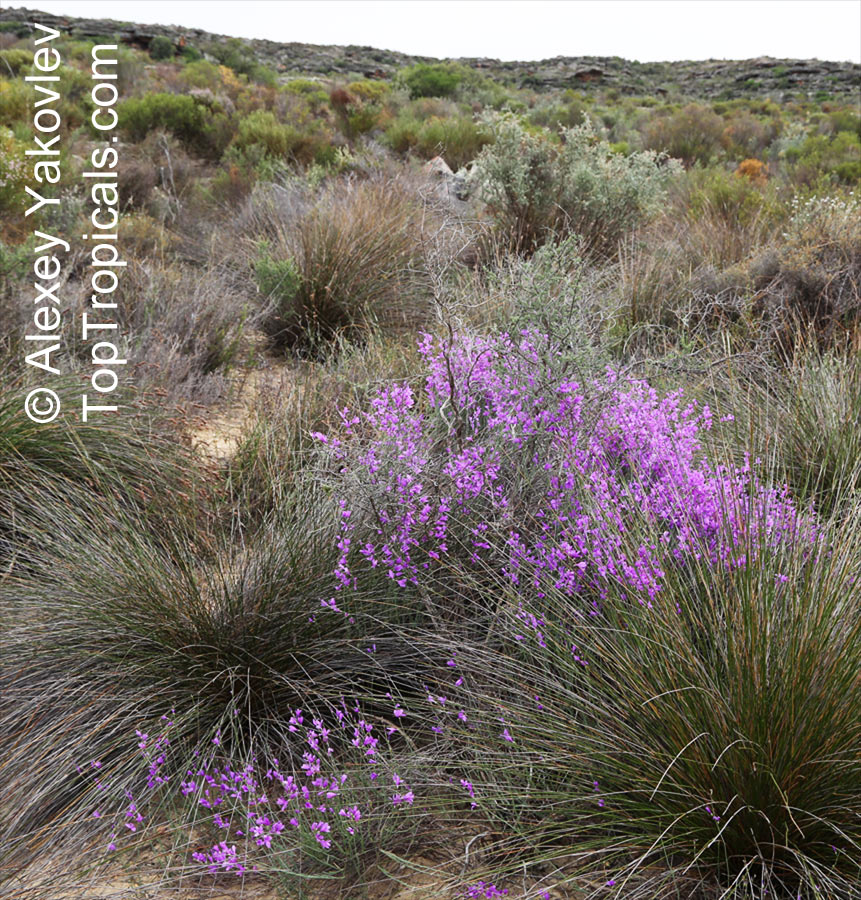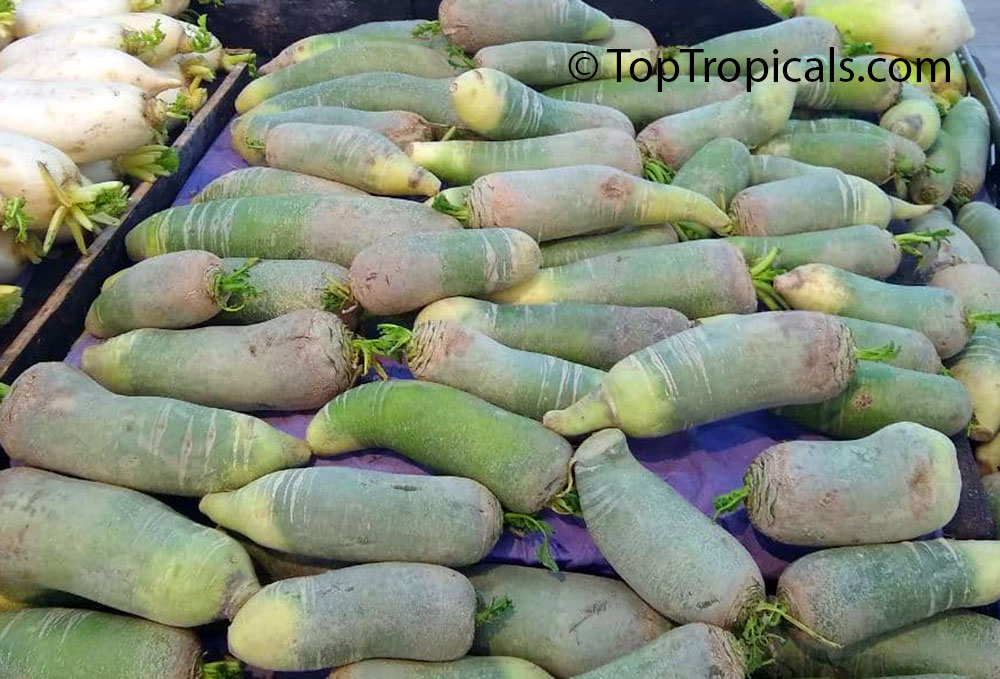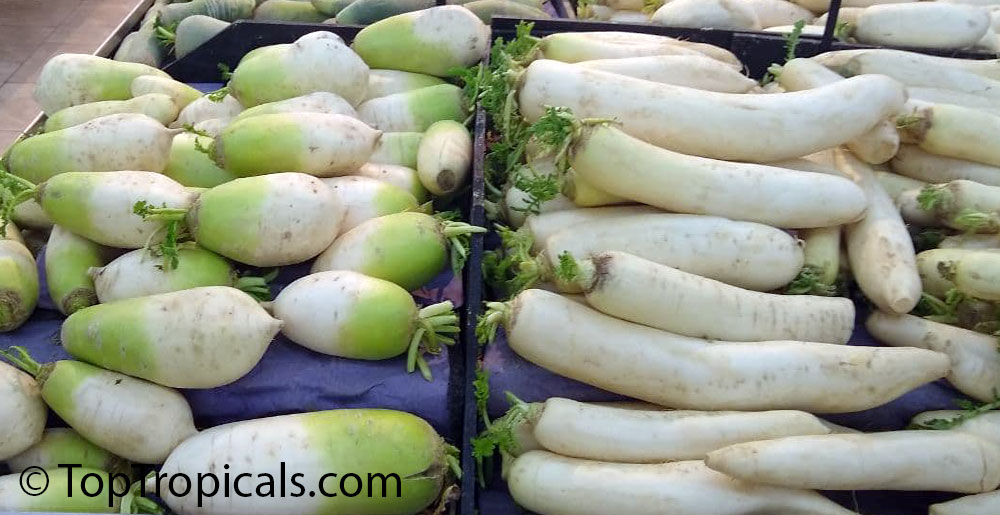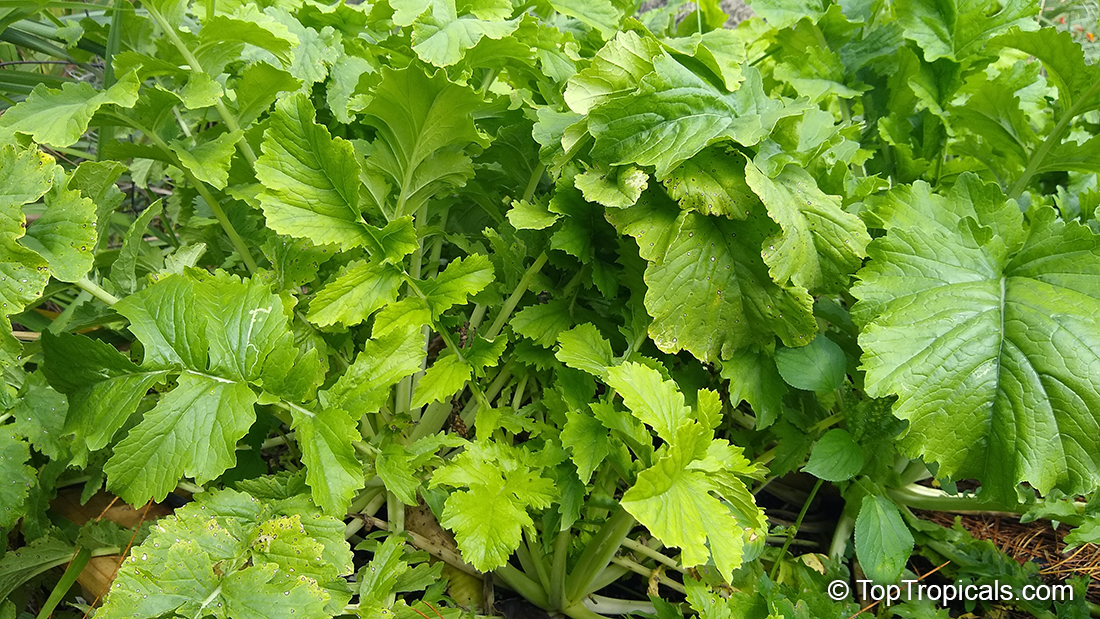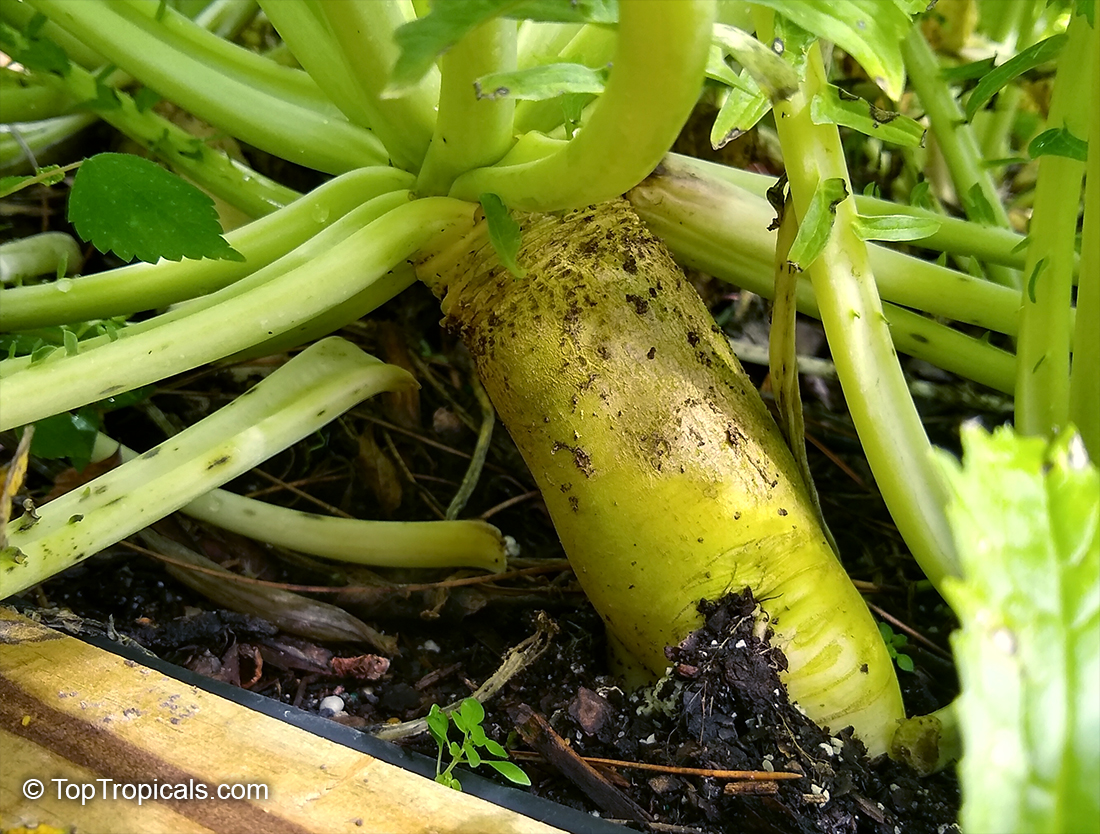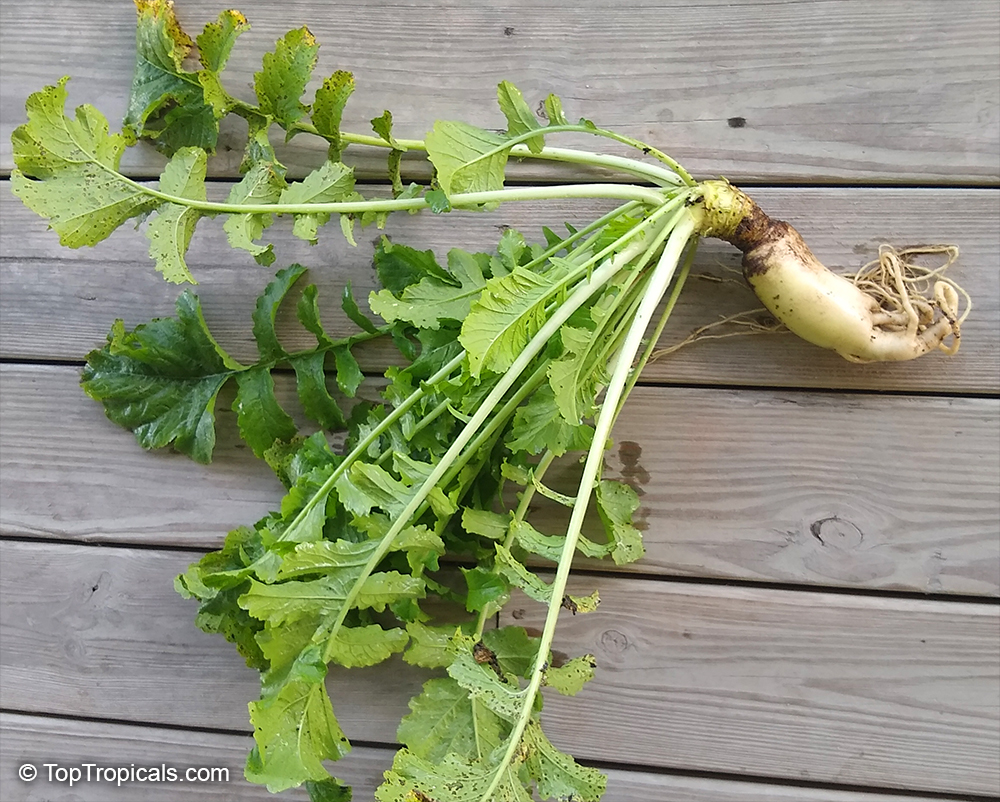Brassicaceae - Botanical Family
Top Tropicals Plant Encyclopedia
| Number of plants found: 6 |
Botanical name: Brassica oleracea
Common names: Kale, Curly-leafed Cabbage
Cultivar: Acephala
Family: Brassicaceae
Origin: Mediterranean, Asia Minor







Kale is native to the Mediterranean or to Asia Minor. It was introduced to America from Europe as early as the 17th century.
Flowering Kale is an unusual yet colorful presence in the late summer and autumn garden. This frost tolerant annual should be grown in full sun in a moist, well-drained soil. The brightly colored foliage can be various shades of pink to purple. The plants are best when used for late season color.
Kale produces seed in the second year. It is grown from seed as an annual. Culture is similar to that for cabbage and collards.
Botanical name: Eruca vesicaria subsp. sativa
Common names: Arugula, Garden Rocket
Family: Brassicaceae
Origin: Europe, Italy








Eruca vesicaria sativa, also known as Arugula, is a versatile leafy green that is widely cultivated in the Mediterranean area. It is a low-growing, groundcover plant that typically reaches only 2ft in height. This hardy, native European annual is well known for its smooth, glossy, lyrate leaves and pale citron-yellow flowers, which make it a popular and attractive garden plant.
Not only is Arugula visually appealing, it is also packed with nutrients and offers several health benefits. It is rich in vitamin C, potassium, dietary fiber, and antioxidants that aid in digestion and boost immunity. Additionally, studies indicate that it has anti-inflammatory and anti-cancer properties.
Arugula is known for its strong, peppery taste that provides a flavorful kick to any dish. It can be eaten young and tender in salads or mixed into pasta and rice dishes, cooked as a vegetable, or used raw with pasta or meats. One mature plant can produce an abundance of leaves, making it a perfect choice for large families or those looking to harvest their own home-grown greens.
Growing Arugula is easy, and it can be grown in a pot or in the ground in full sun or semi-shade. It requires moderate water and should be planted in USDA Zones 6-9.
In India, the mature seeds of Arugula are known as Gargeer, while on the island of Ischia in the Gulf of Naples, a digestive alcohol called Rucolino is made from the plant. It is considered an aphrodisiac and has been grown since Roman times in the Mediterranean area. Nowadays, it is widely cultivated in various places, especially in Veneto, Italy, and is available throughout the world.
Botanical names: Erysimum sp., Cheiranthus sp.
Common name: Wallflower
Family: Brassicaceae











Although they can be grown in semi-shade they prefer full sun, when they will flower with more vigor. When planted in a sunny position they will flower in the early spring and are able to tolerate the cold weather and are mature plant cold hardy at least to 30s F (Zone: 8-11).
They require regular water and are relatively drought tolerant. While they are excellent for low maintenance landscapes, they do require occasional trimming to maintain the desired shape.
For growing Erysimum in pots, a well drained soil mix is required. When the weather starts to cool, smaller pots must be brought in and placed in a bright sunny location indoors and be sure to remove any dead leaves. In cold regions, these pots must be sheltered from strong winds, preferably placed in a frost free shed or garage.
Erysimum sp. is a great choice for adding beauty and color to the garden. Not only do they attract butterflies and hummingbirds, they also bloom in a variety of colors including pink, blue, lavender and purple, red, crimson and vinous, and yellow and orange which can brighten up any landscape.
Botanical names: Eutrema japonicum, Wasabia japonica
Common names: Wasabi, Japanese Horseradish
Family: Brassicaceae
Origin: Japan







Eutrema japonicum grows naturally along stream beds in mountain river valleys in Japan. It is green, has an extremely strong flavor.
It favours a moist, humus-rich soil and a semi-shaded location. It is very quick-growing and has a large attractively round kidney-shaped leaf resembling an Asarum and a smallish rather elegant white flower on a whiskery stem.
Botanical names: Heliophila juncea, Brachycarpaea juncea
Common names: Wild Stock, Bergviool
Family: Brassicaceae
Origin: South Africa








Grown best in full sun or semi-shade, Heliophila juncea will reach a modest height of 2-5 ft, making it perfect for smaller gardens. This small plant loves plenty of water and is easy to care for. It can handle light frosts and survive with little care, however should be well-watered during the hot months of the summer.
To get optimum flowering, the soil should be well-draining, but with some retained moisture. To keep it flowering and healthy, add a general-purpose fertilizer once a month and prune back any old or dead growth.
When planting in pots, choose a well-draining potting mix like a cactus mix and make sure to add a slow-release fertilizer occasionally. With the hotter temperatures of USDA zone 9-11, extra care must be taken to ensure adequate water. A few inches of mulch will help keep the roots cool and prevent moisture loss.
It's easy to see why this beautiful native to South Africa is used so often in gardens and flower beds. The variety of flower color is sure to attract butterflies and hummingbirds, adding life to any garden setting. Peeping pink, white, off-white, blue, lavender, and purple flowers, with four petals are tightly united together in a pinwheel fashion, will liven up any landscape. Heliophila juncea is an easy plant to grow and enjoy!
Botanical name: Raphanus sativus
Common names: Daikon, Winter Radish, Oriental Radish, Long White Radish
Family: Brassicaceae
Origin: East Asia







Daikon (literally - big root), Raphanus sativus var. longipinnatus, also known by many other names depending on context, is a mild-flavored winter radish usually characterized by fast-growing leaves and a long, white, napiform root. Originally native to continental East Asia, daikon is harvested and consumed throughout the region, as well as in South Asia, and is now available internationally. In some locations, daikon may be planted but not harvested, for its ability to break up compacted soils and recover nutrients.
In Japan, many types of pickles are made with daikon roots, including takuan and bettarazuke. Daikon roots can be served raw, in salads, or as sashimi's tsuma which is prepared by meticulous katsura-muki. Daikon-oroshi (grated daikon) is frequently used as a garnish, often mixed into various dippings such as ponzu, a soy sauce and citrus juice condiment. The pink spicy momiji-oroshi, literally "autumn-leaf-red grated (daikon)") is daikon grated with chili pepper. Simmered dishes are also popular such as oden. Daikon that has been shredded and dried (a common method of preserving food in Japan) is called kiriboshi-daikon ("cut-dried daikon"). Daikon radish sprouts (kaiware-daikon (literally "open-clam-like daikon")) are used raw for salad or garnishing sashimi. Daikon leaves are frequently eaten as a green vegetable. They are thorny when raw, so softening methods such as pickling and stir frying are common. The daikon leaf is one of the Festival of Seven Herbs, called suzushiro.
In Chinese cuisine, turnip cake and chai tow kway are made with daikon.
Use link to repeat this search:
https://toptropicals.com/cgi-bin/garden_catalog/cat.cgi?search_op=and&keyword_op=and&language=e&family=Brassicaceae
&number=10&no_change_lang=1&user=tt&sale=1&first=0
